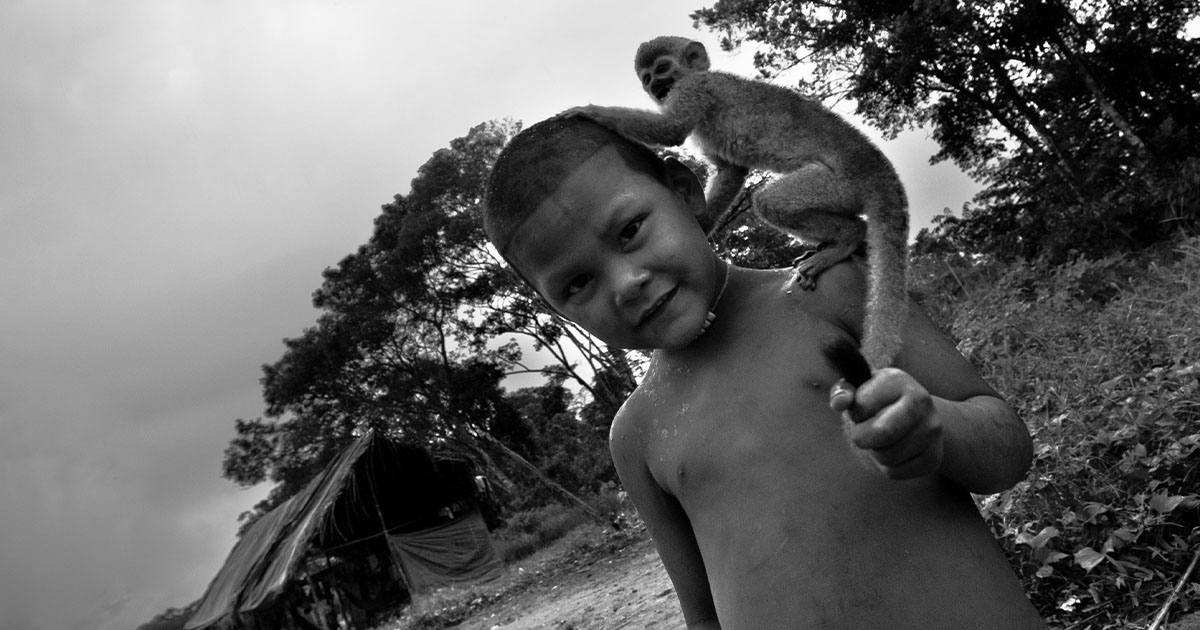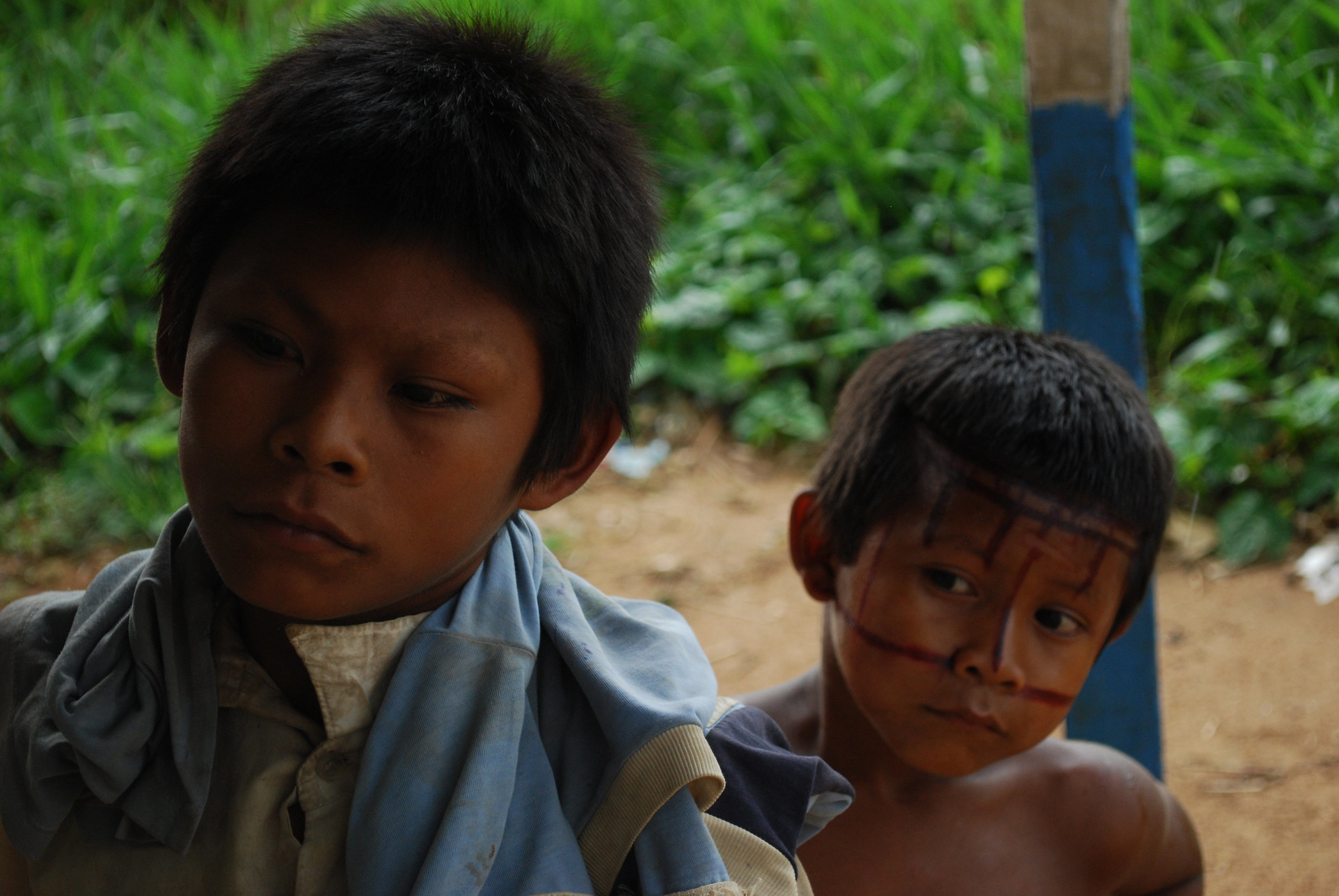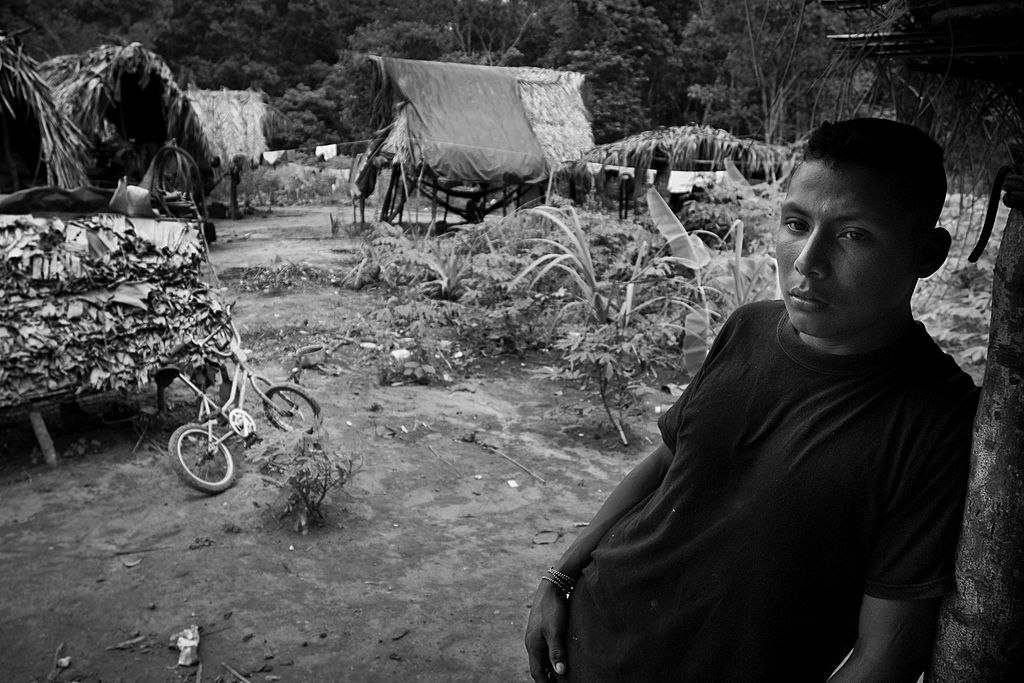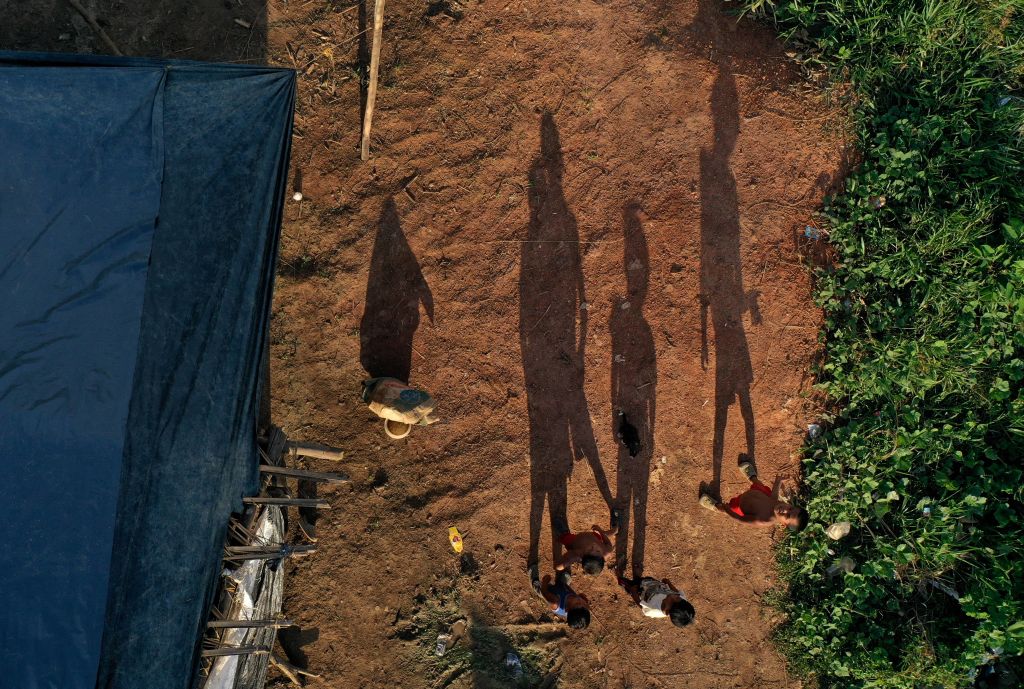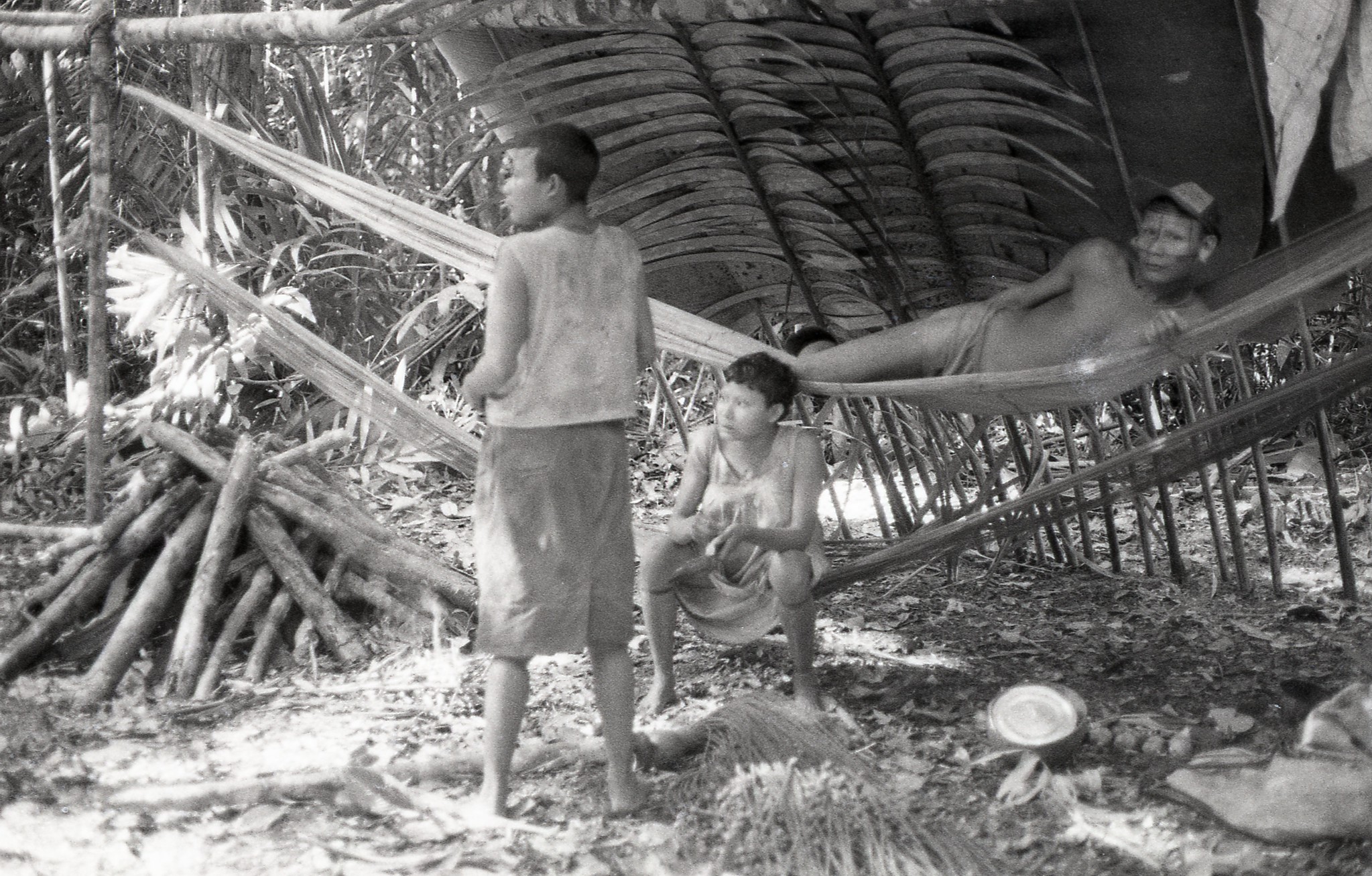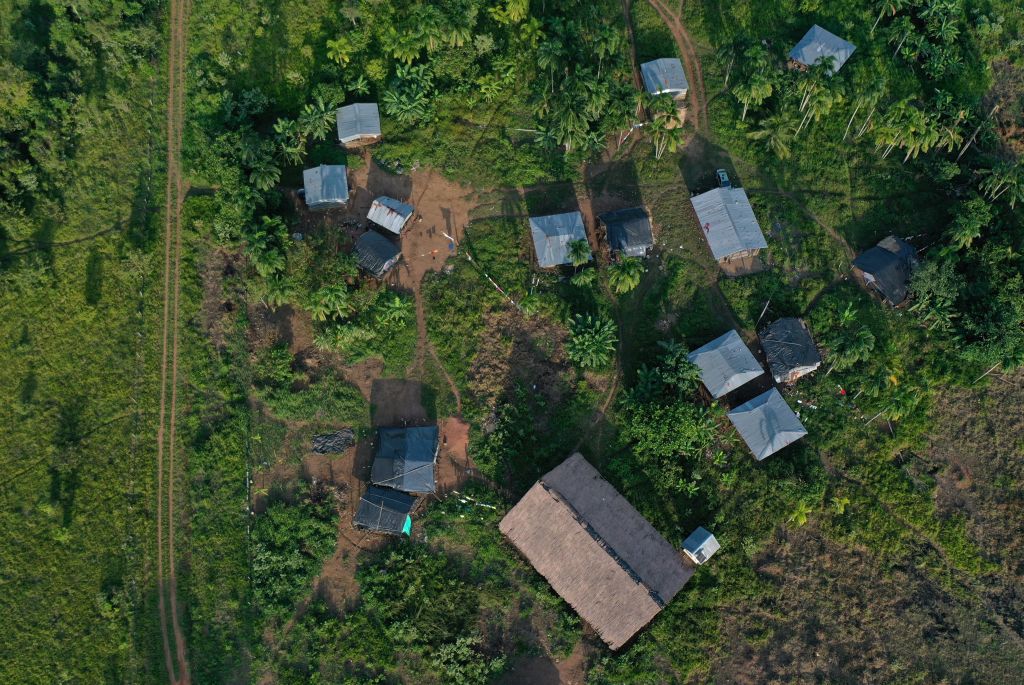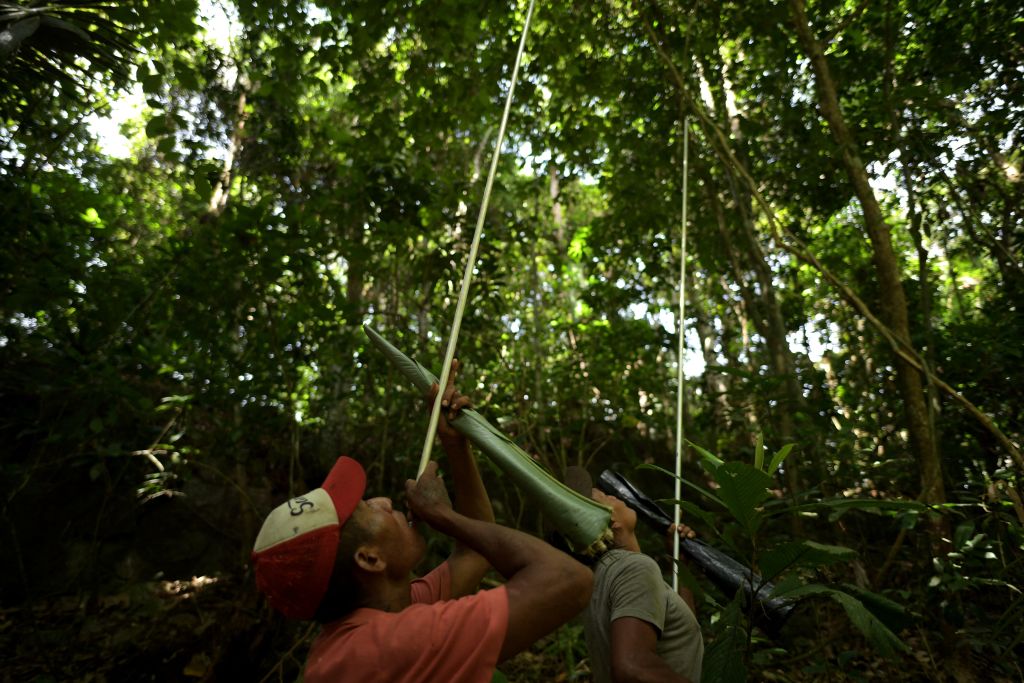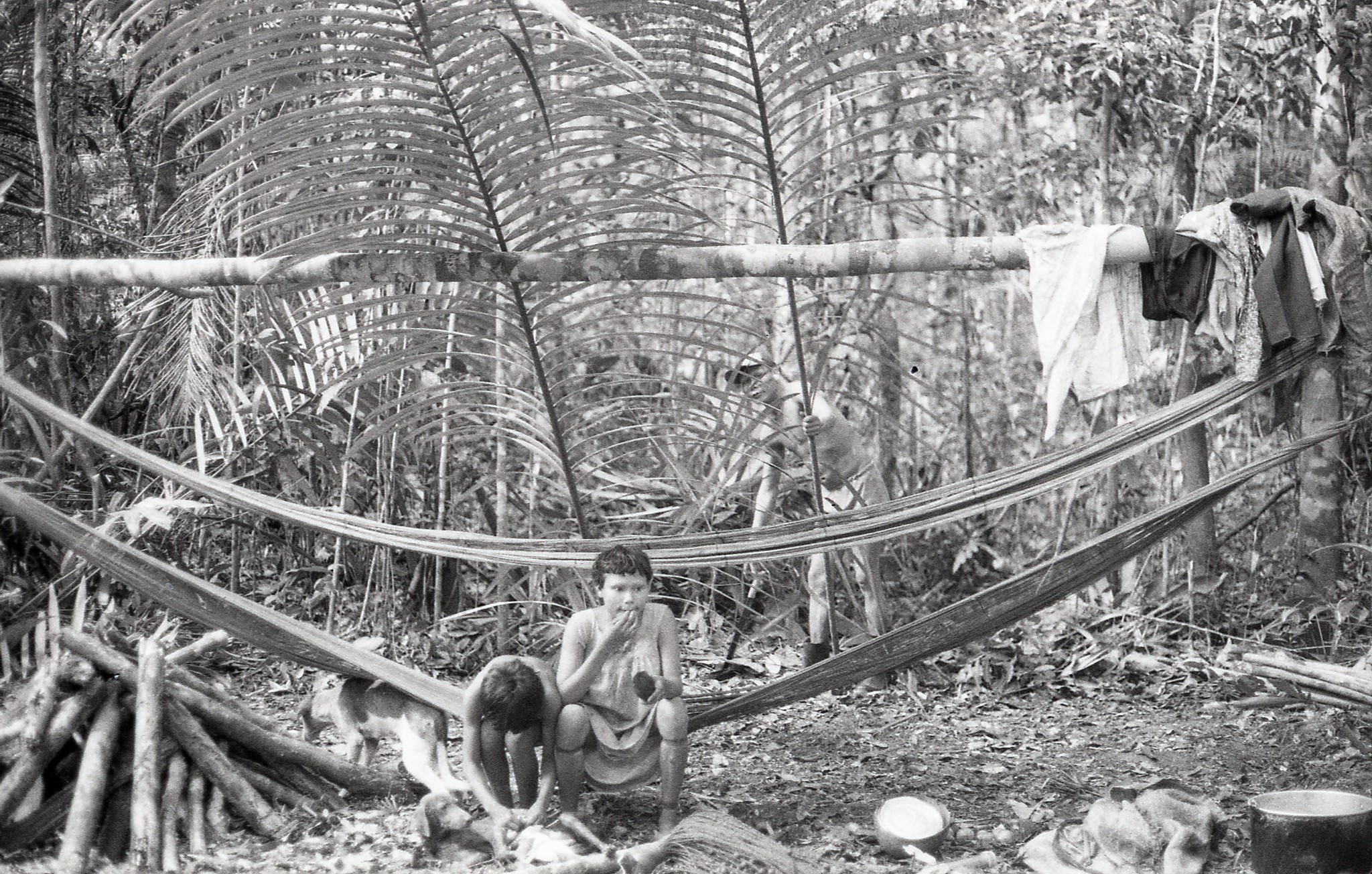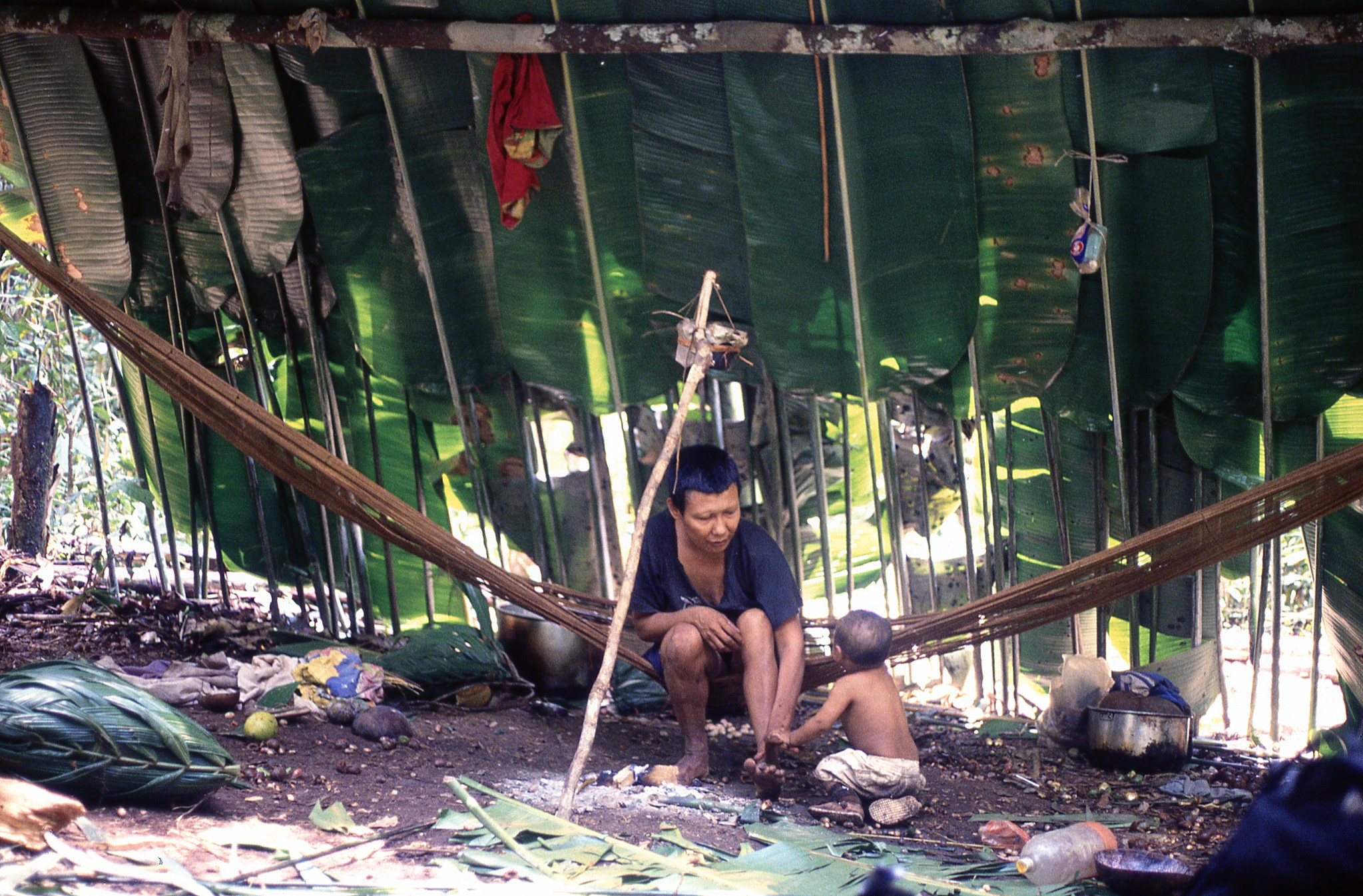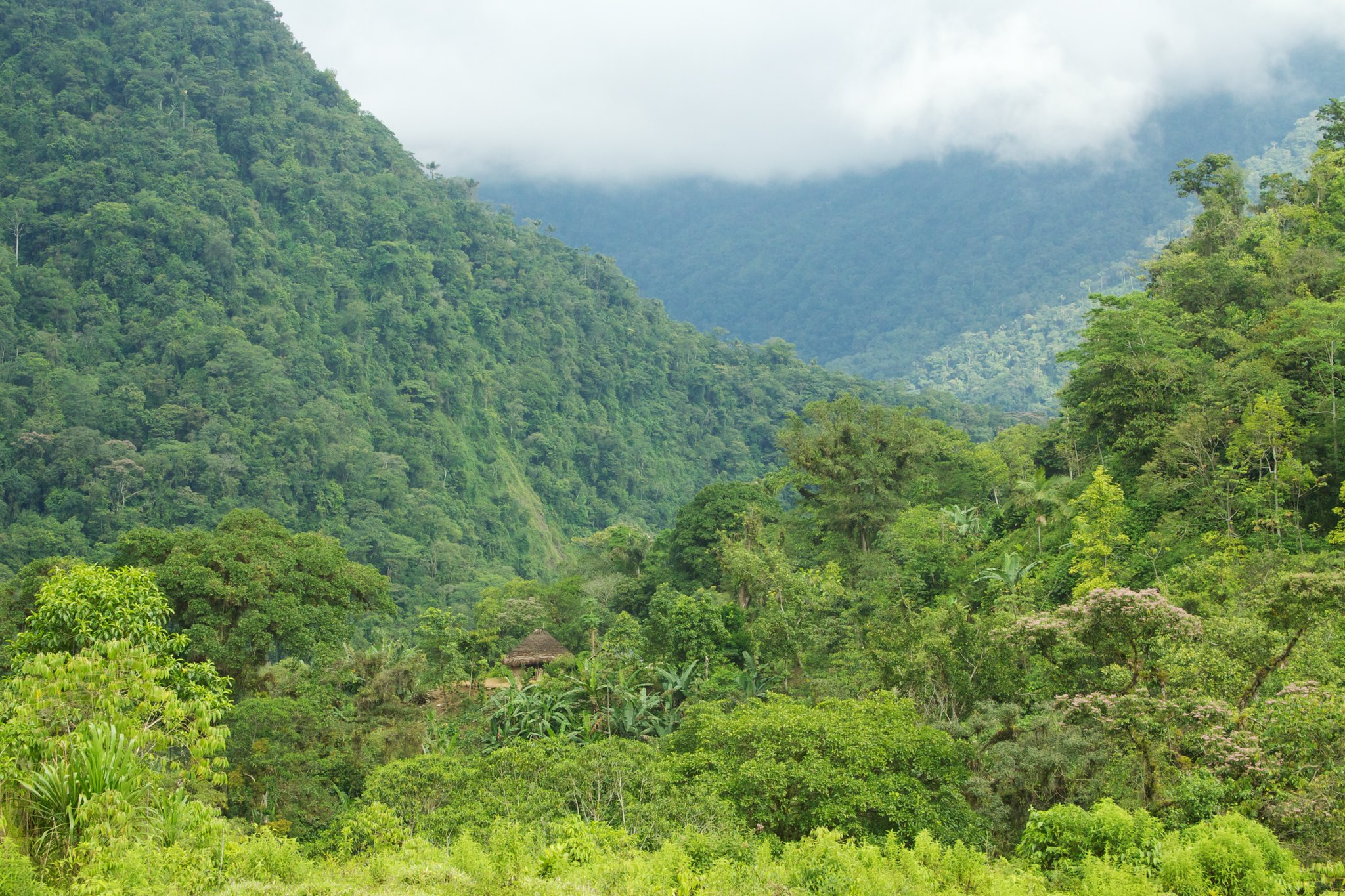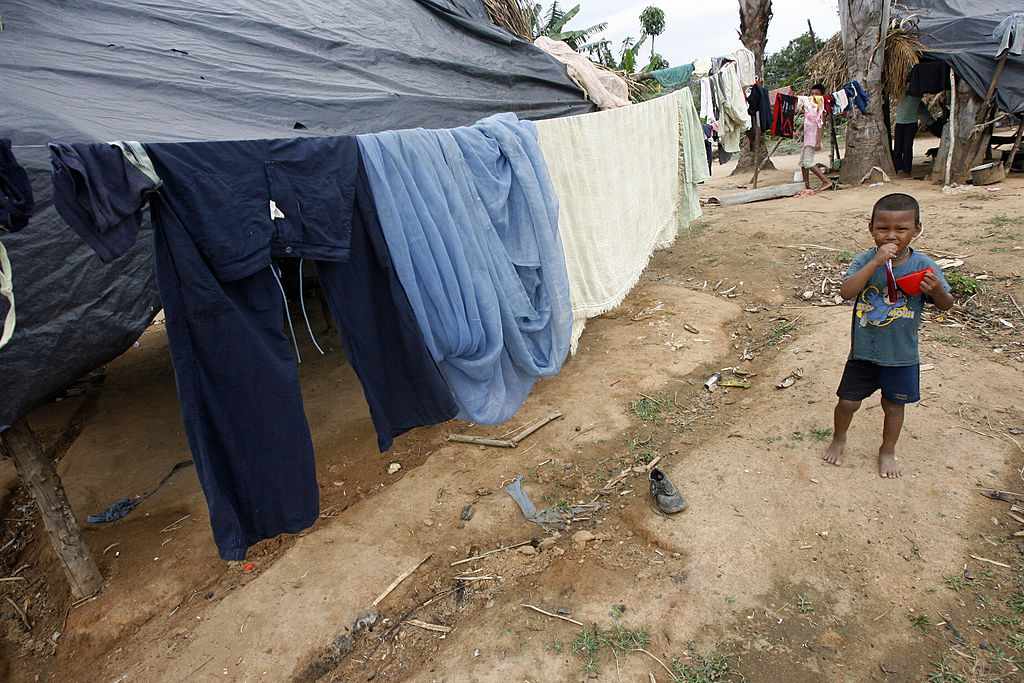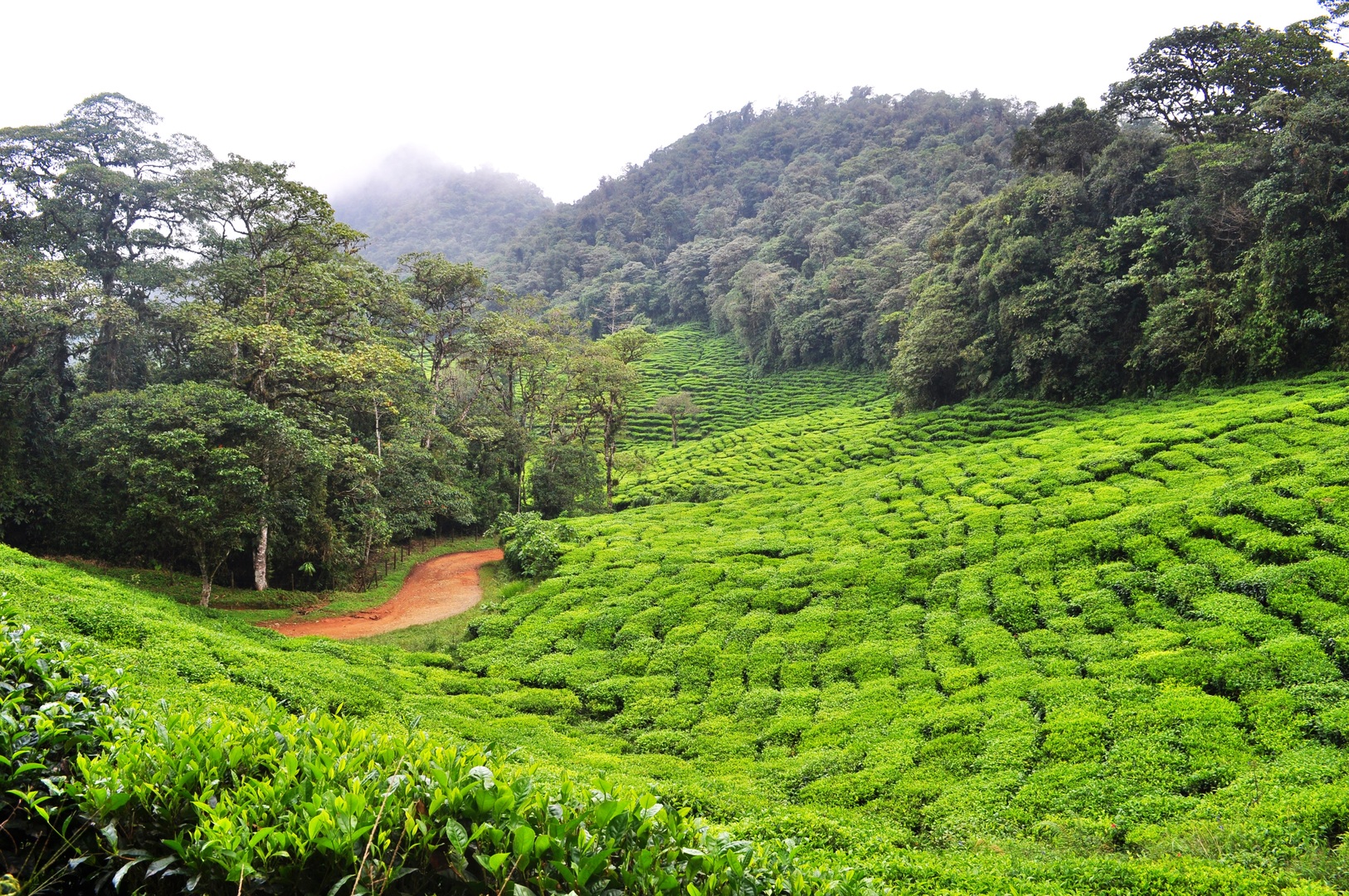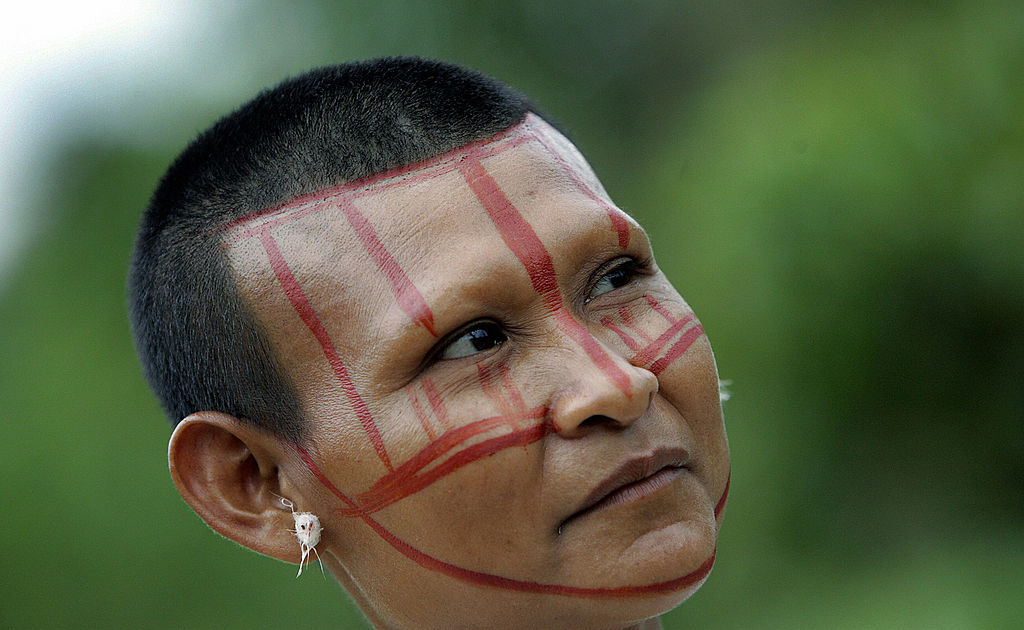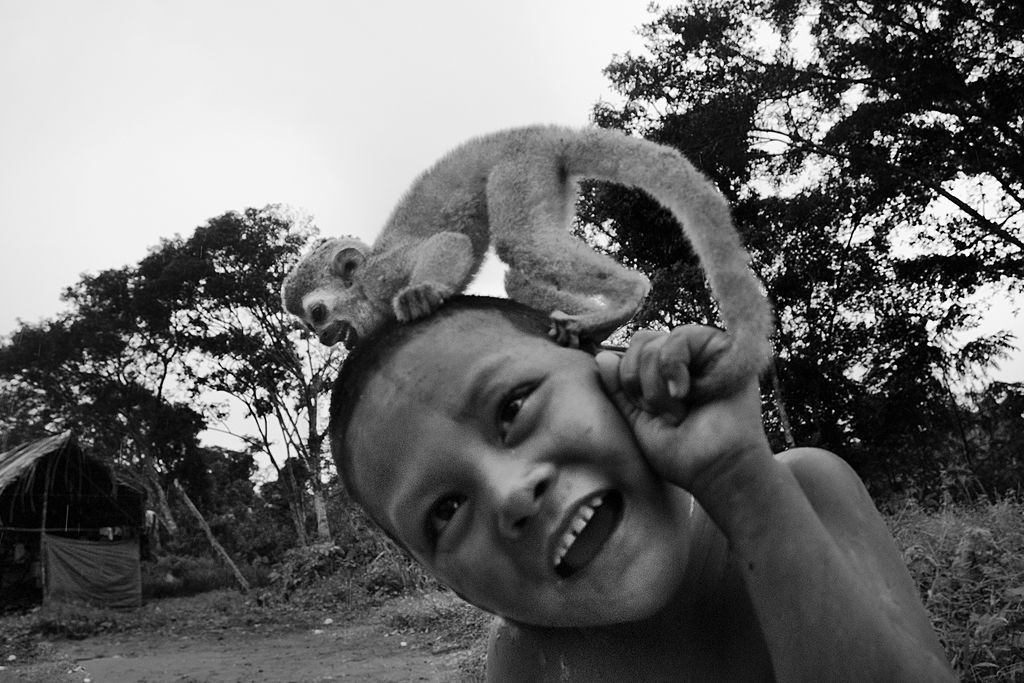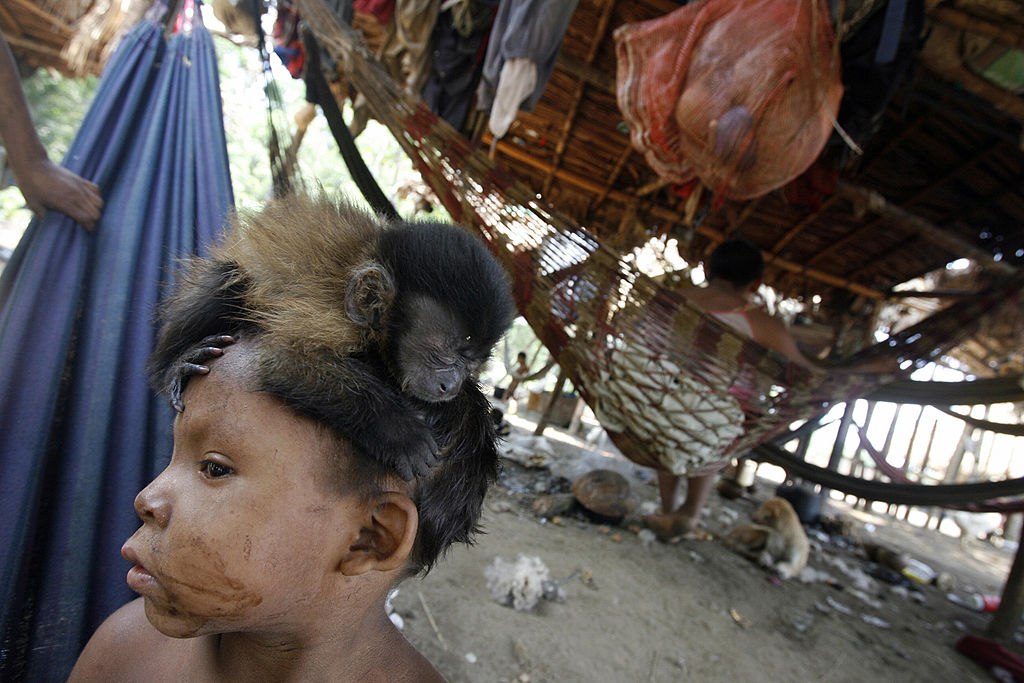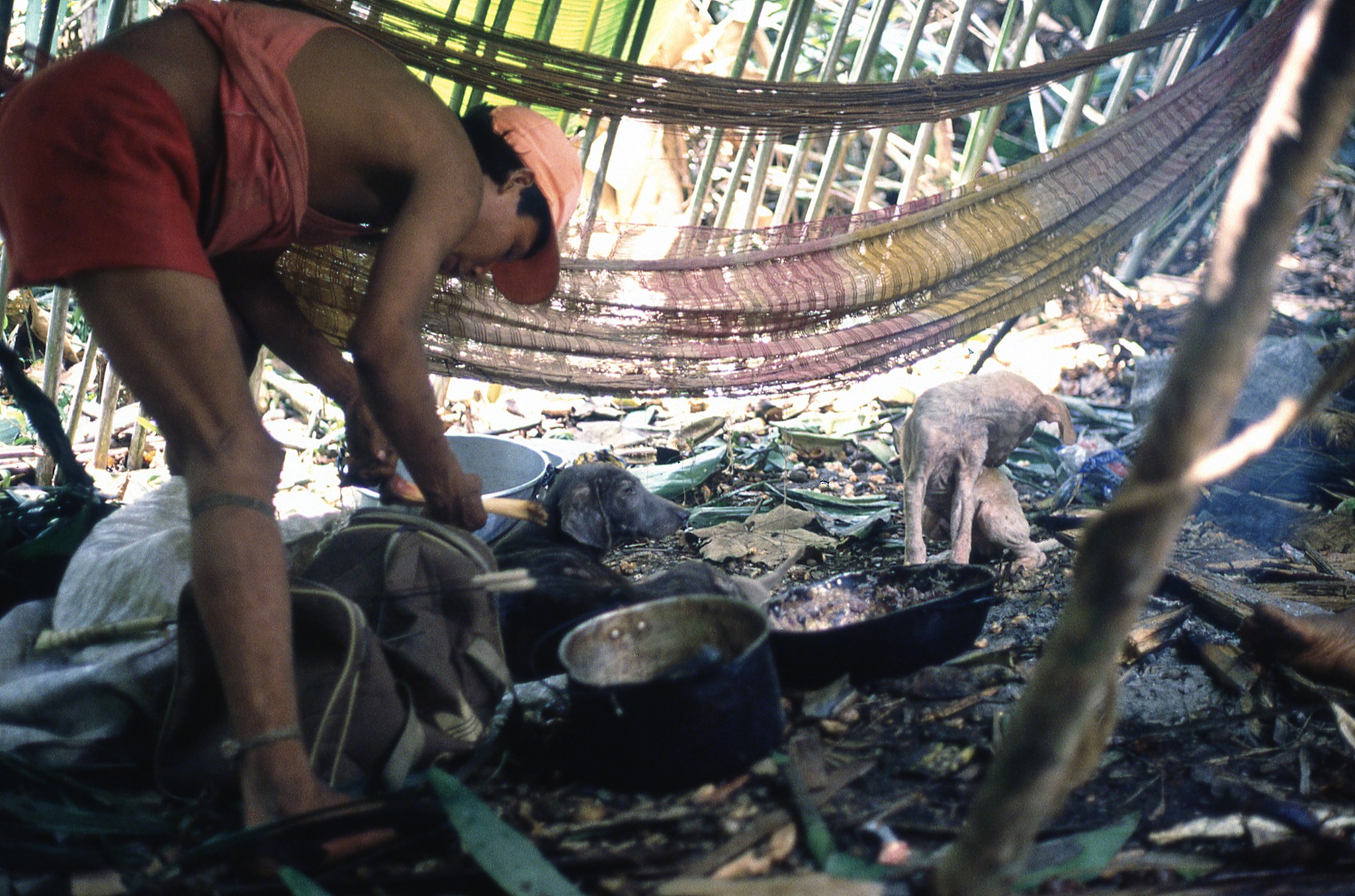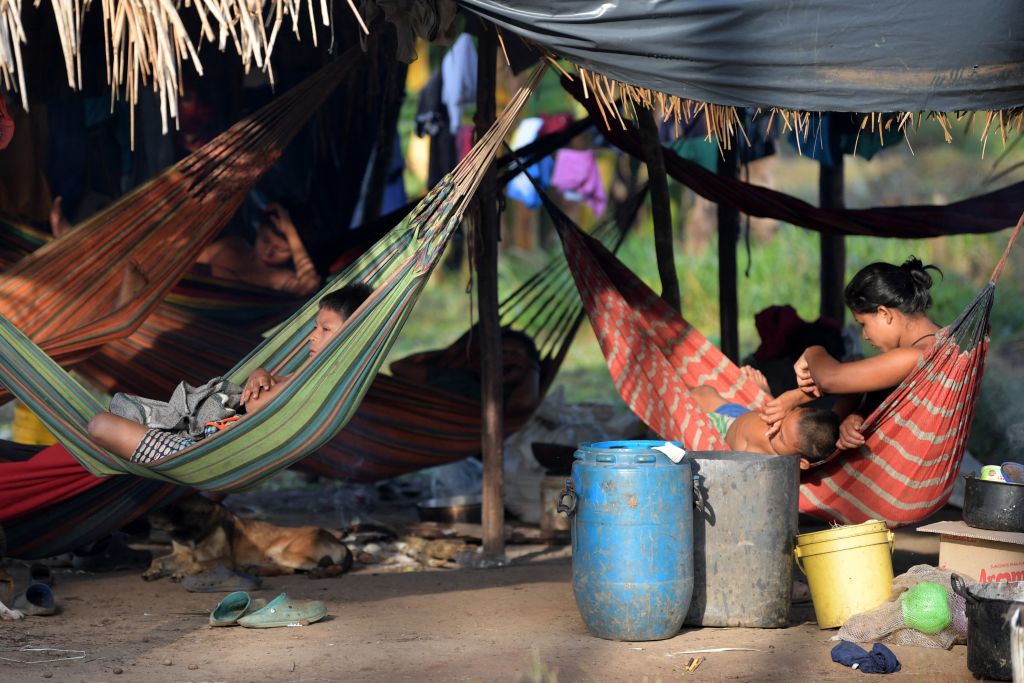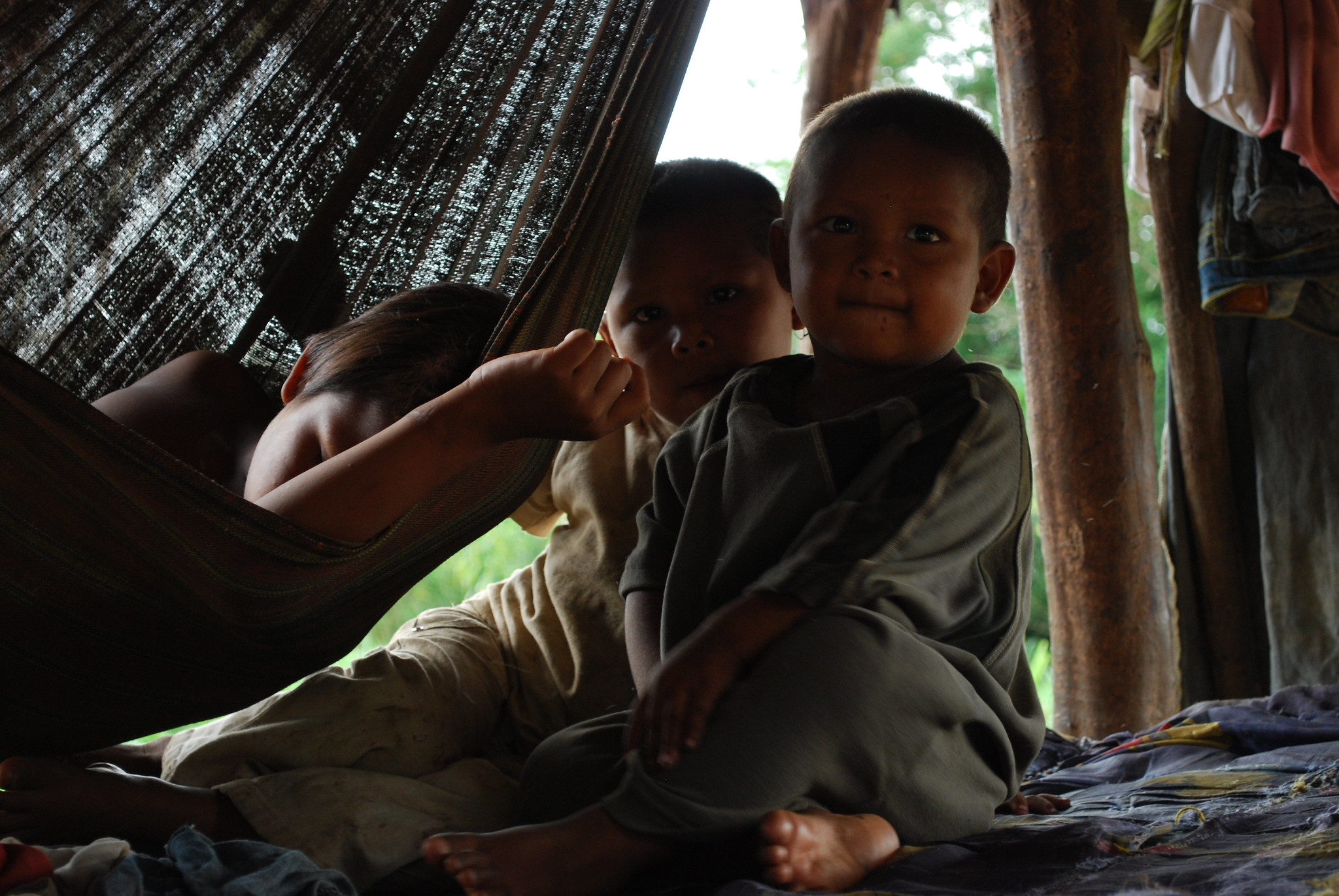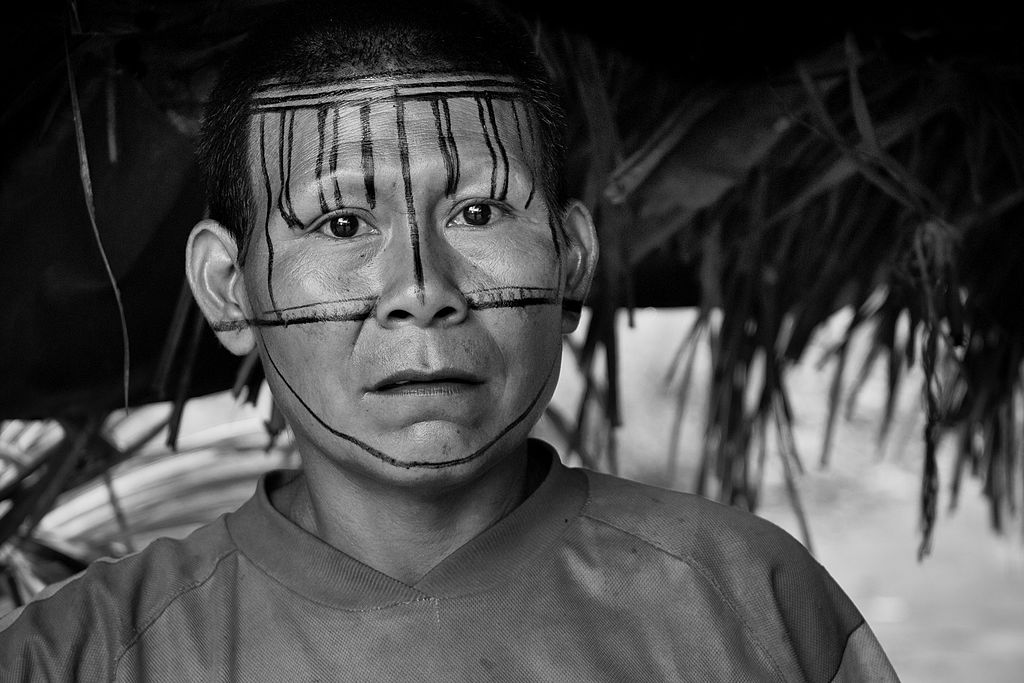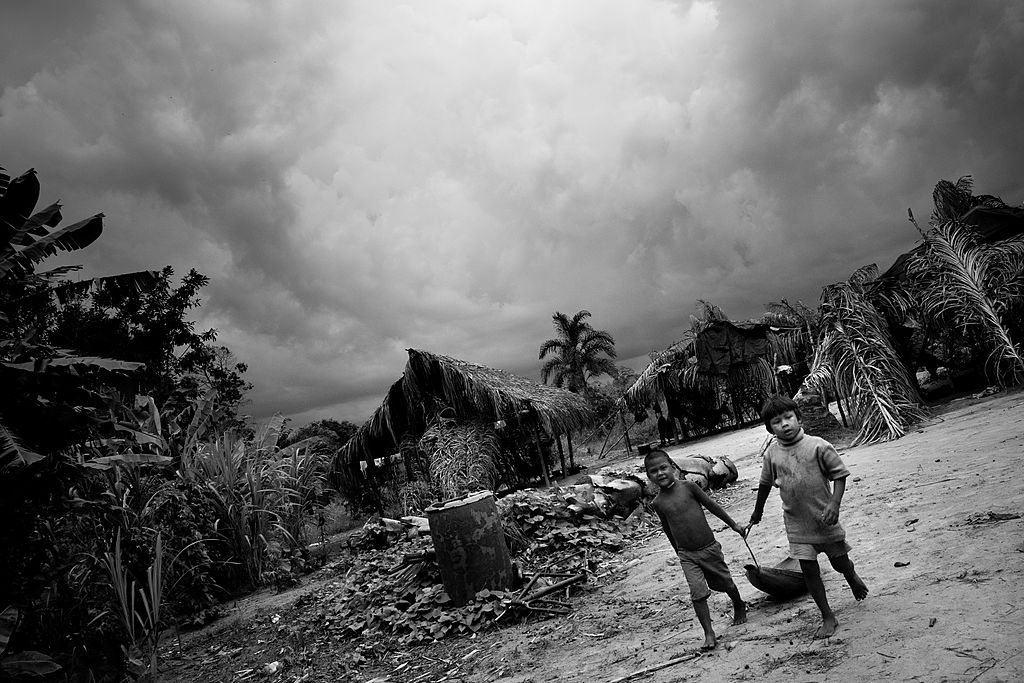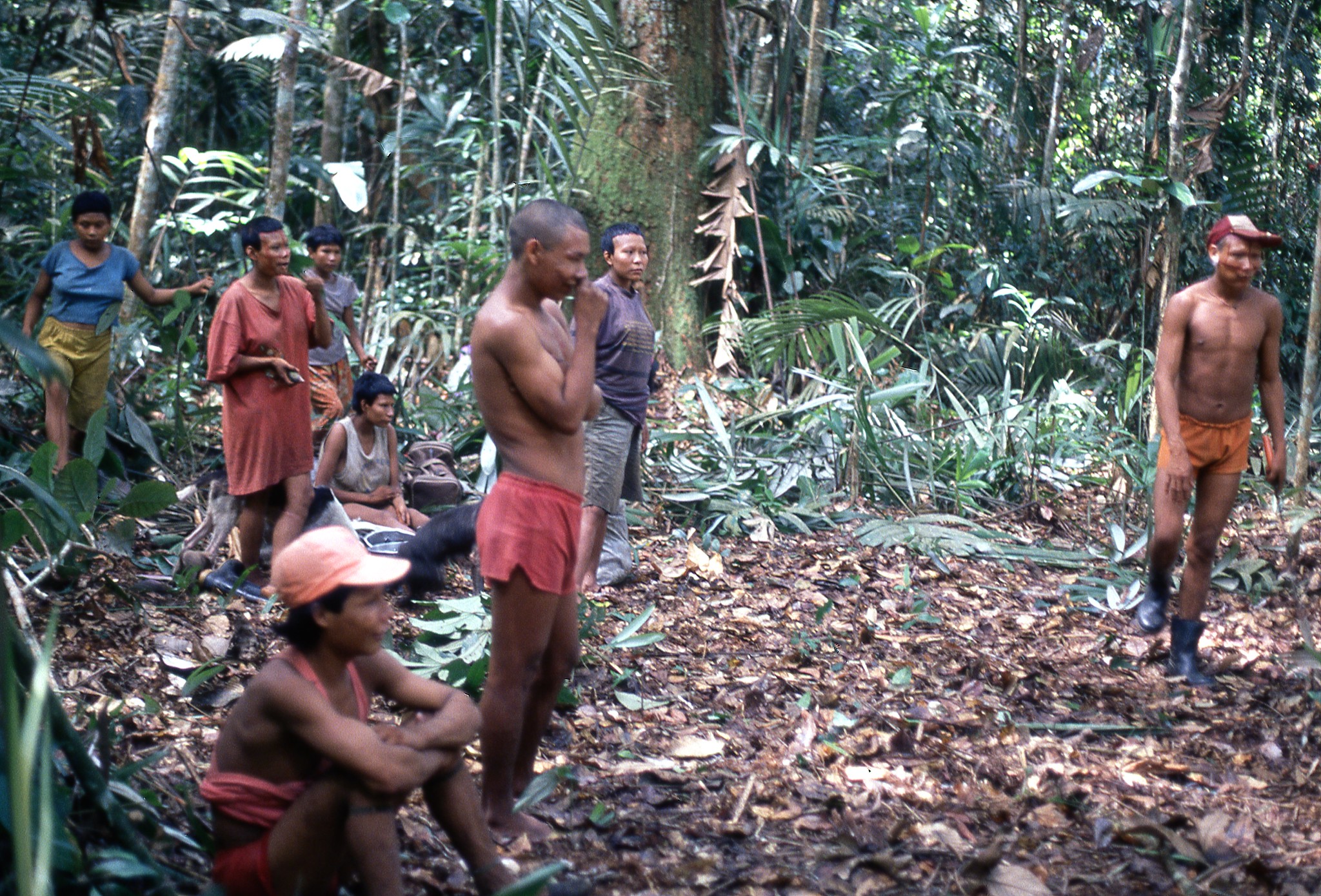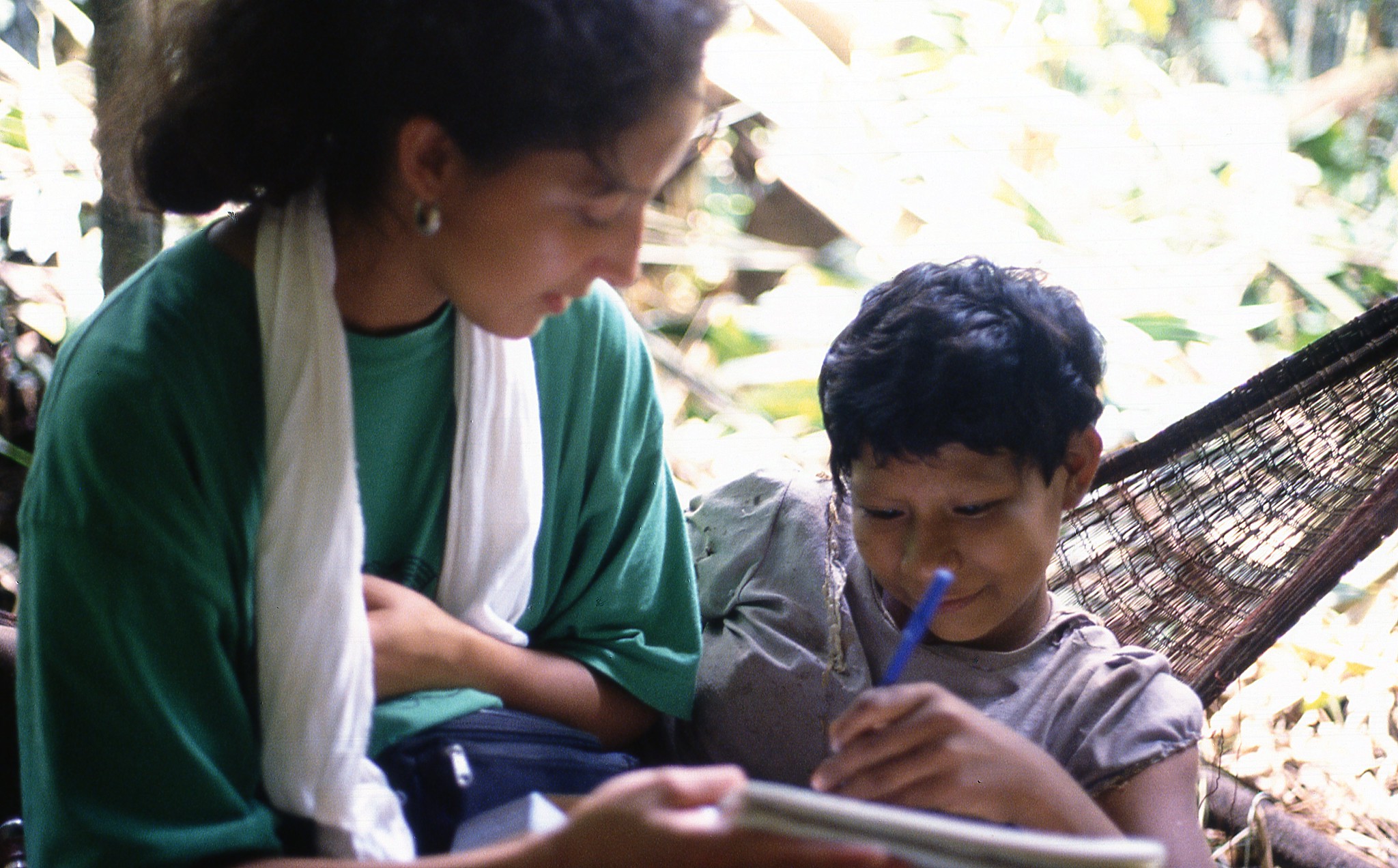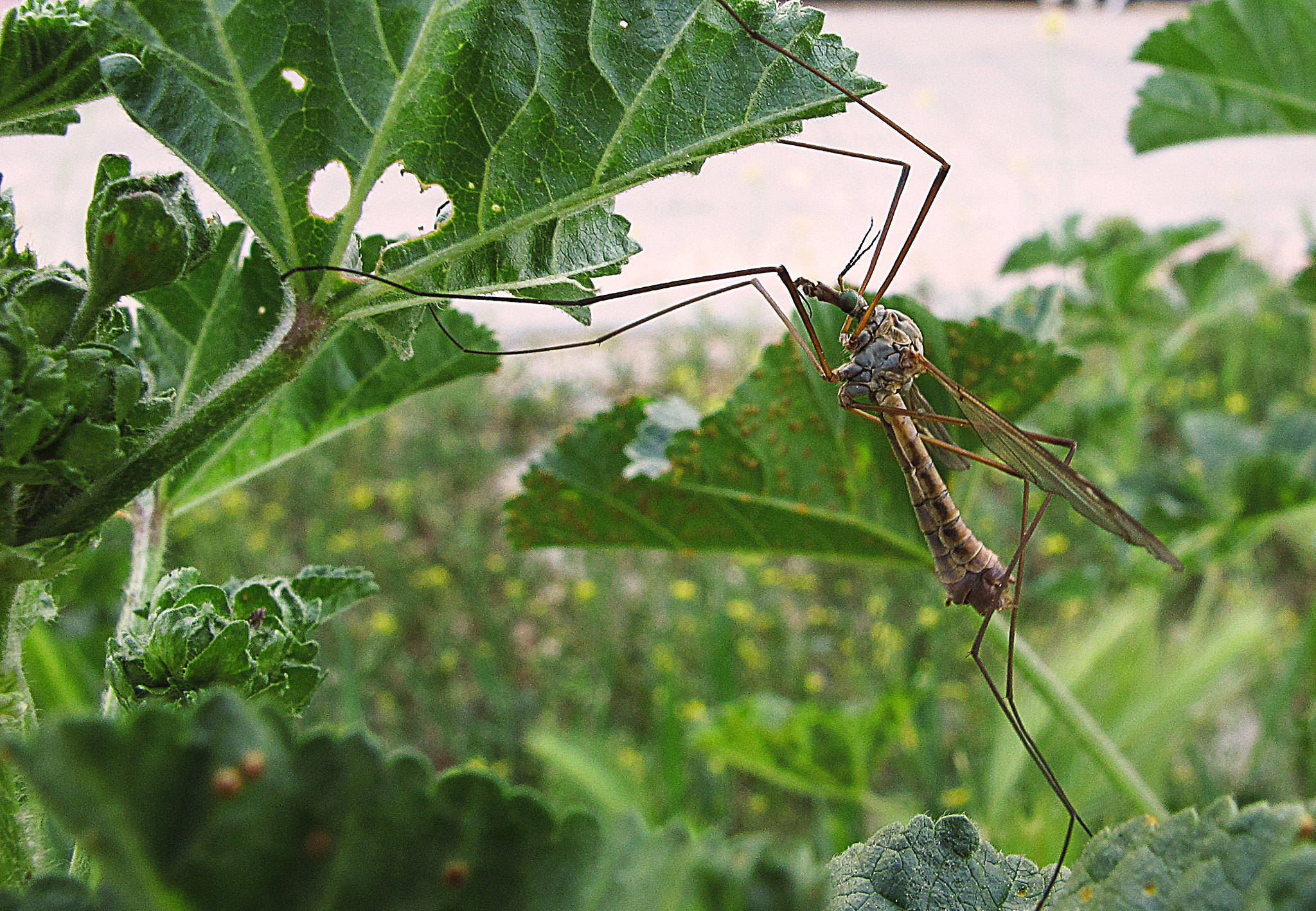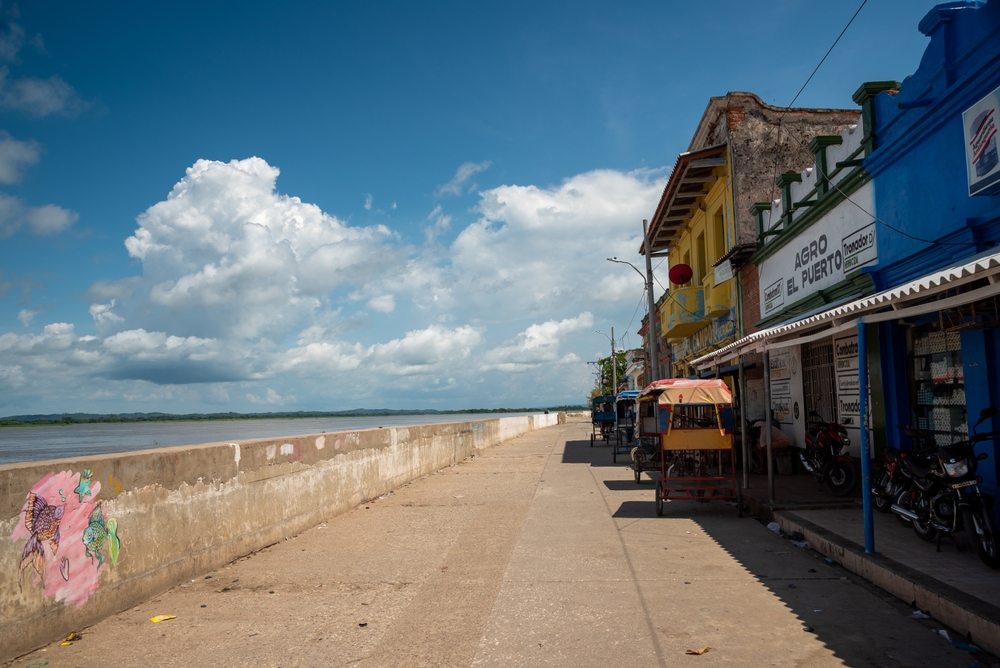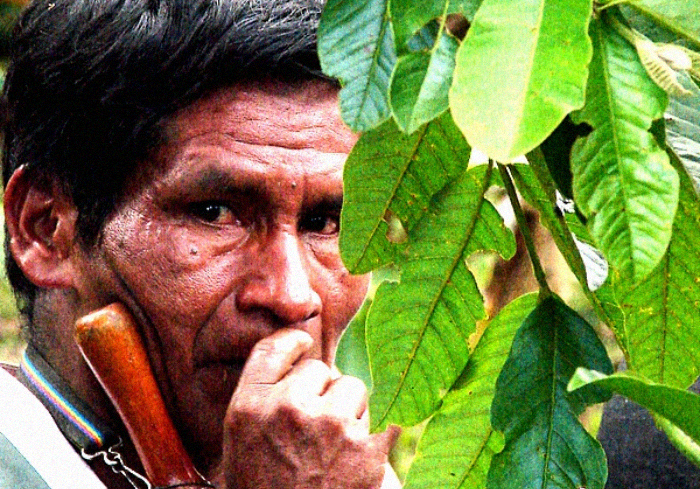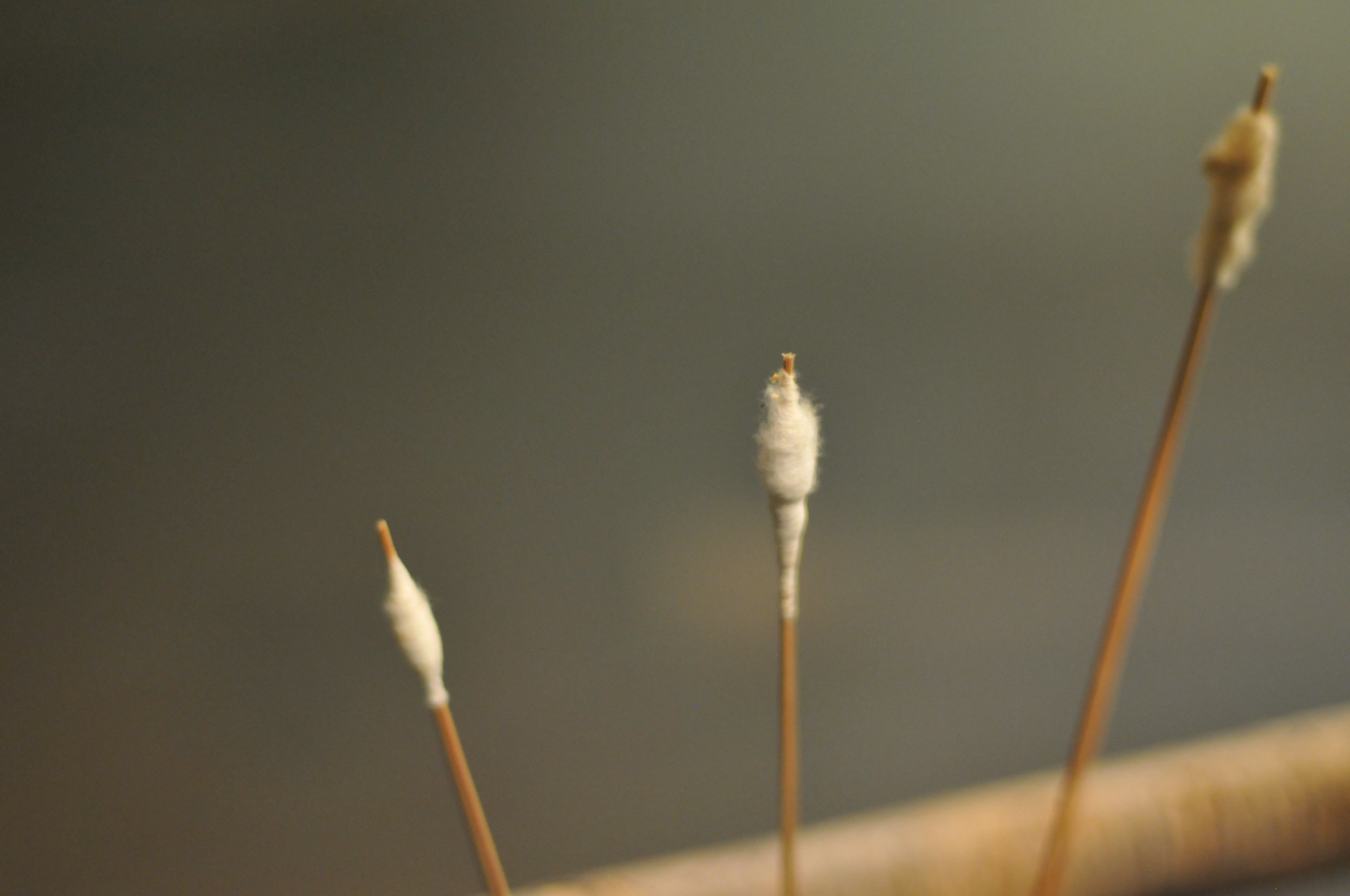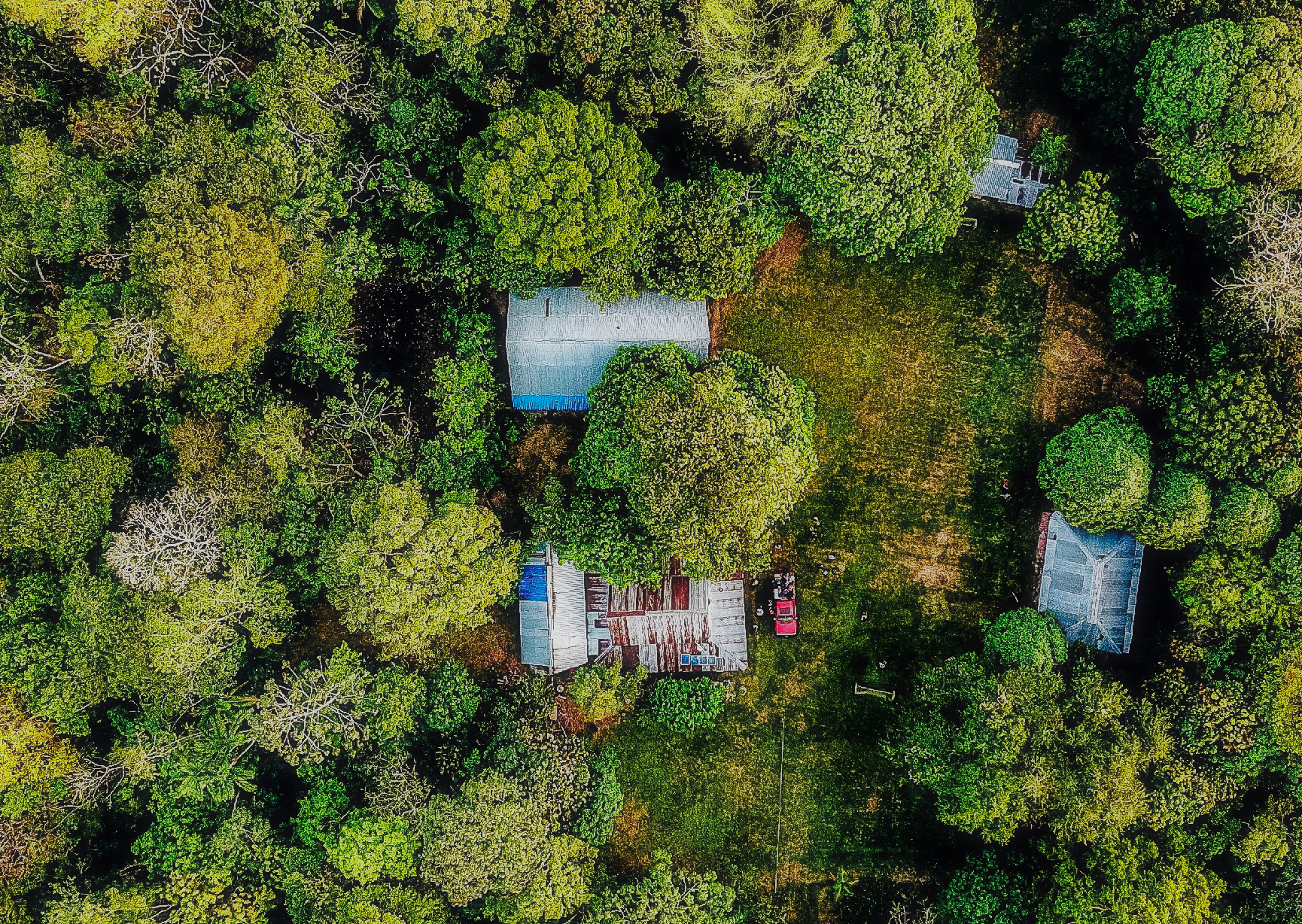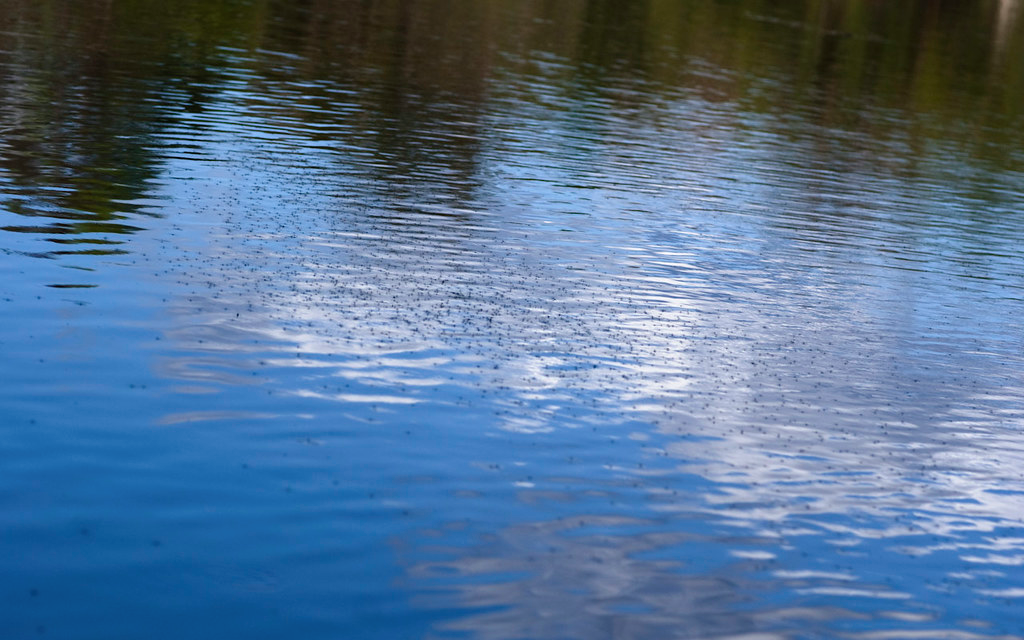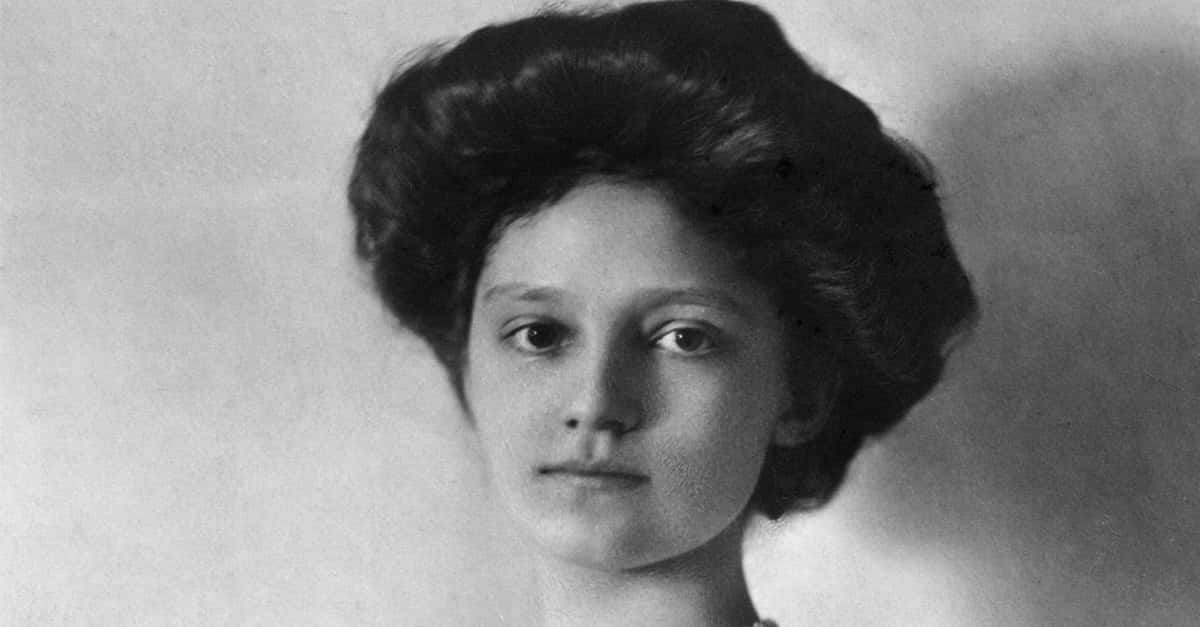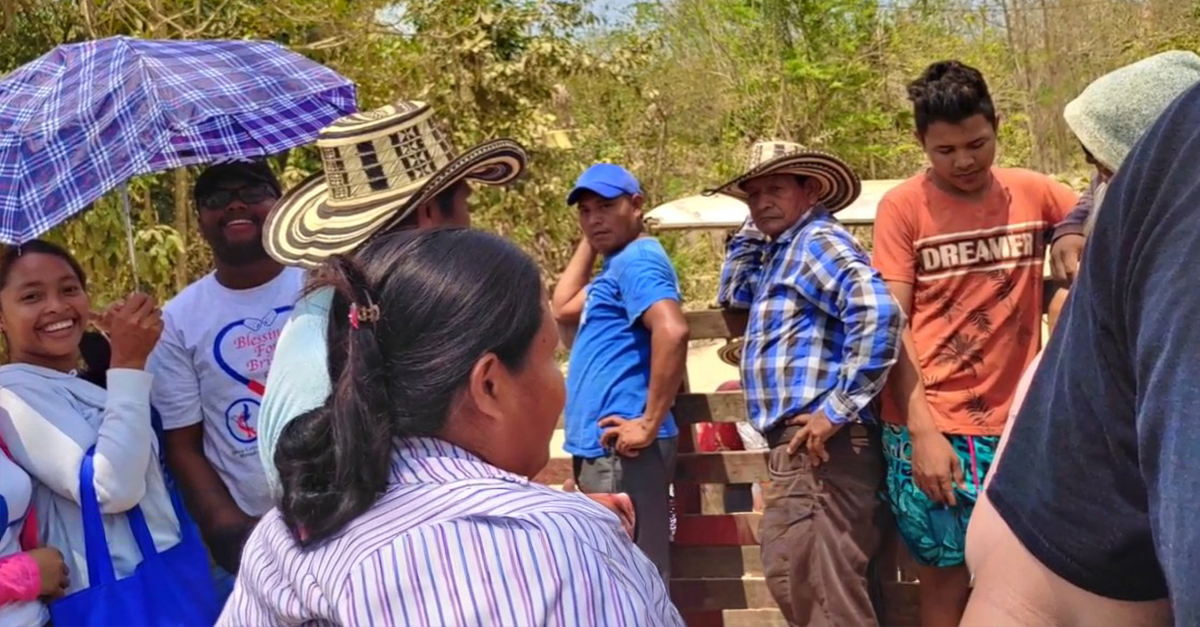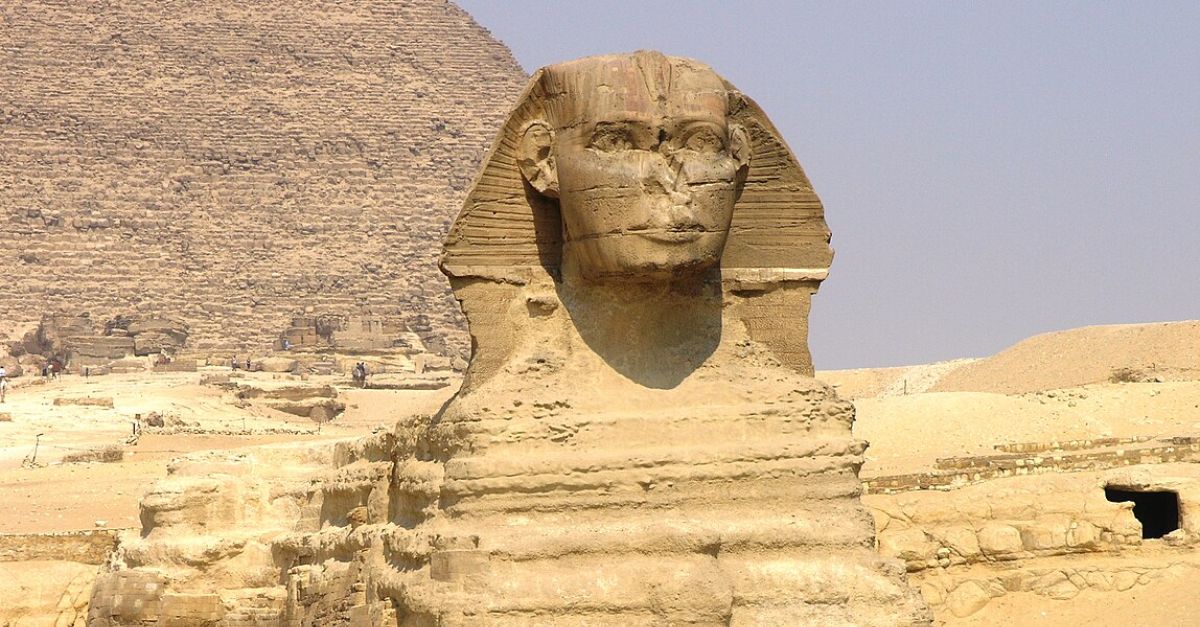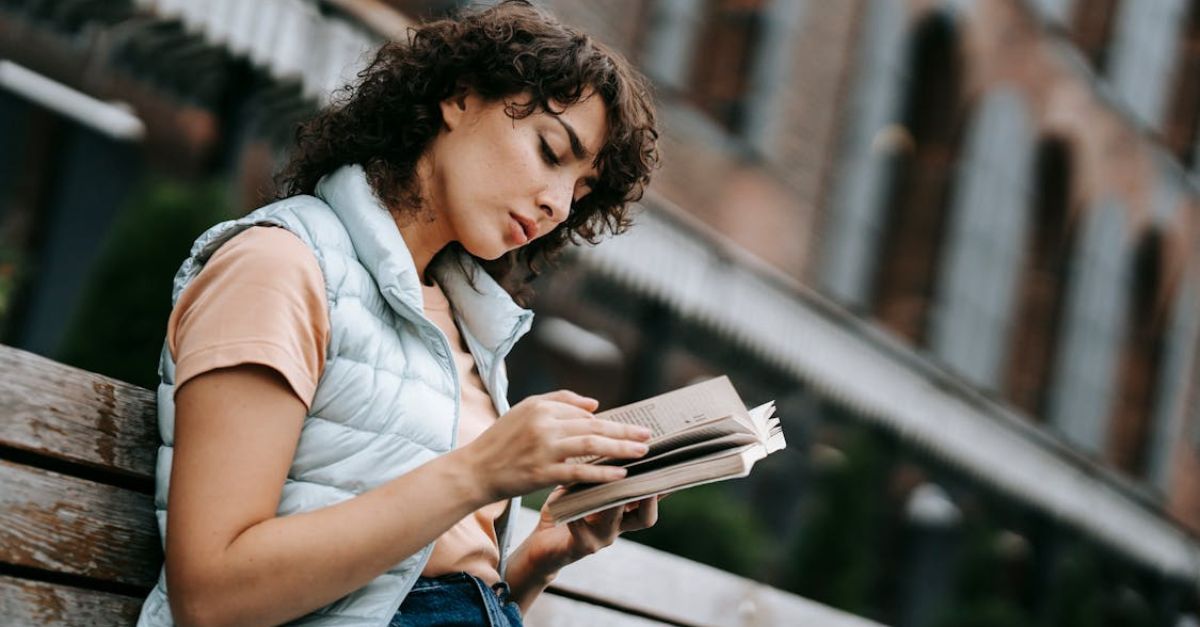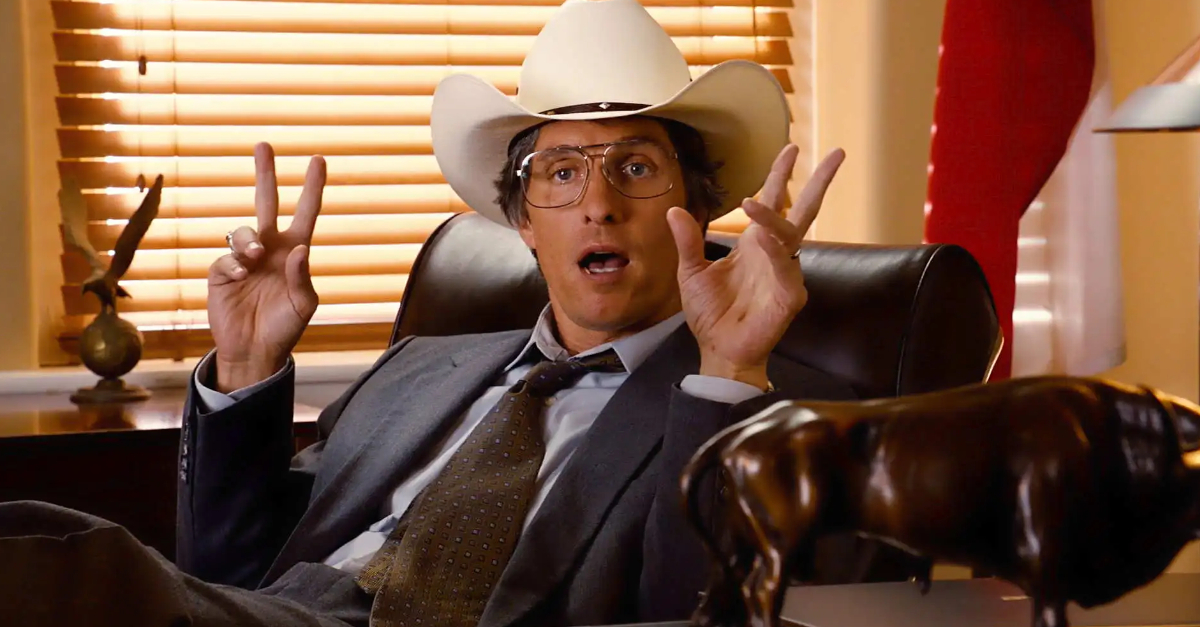The Nukak People Of Colombia
The Nukak are a small tribe native to the Amazon rainforest in Colombia, where they lived off the land, completely isolated and uncontacted for centuries.
They once lived as nomads, moving every few days to follow their resources. But all that changed recently, when they were spotted by outsiders—and they’ve been on a desperate journey for survival ever since.
From their handmade hammocks and lustful marriage practices to their forced colonization and a period of near-extinction, find out how the Nukak have survived all these years, and where they are now.
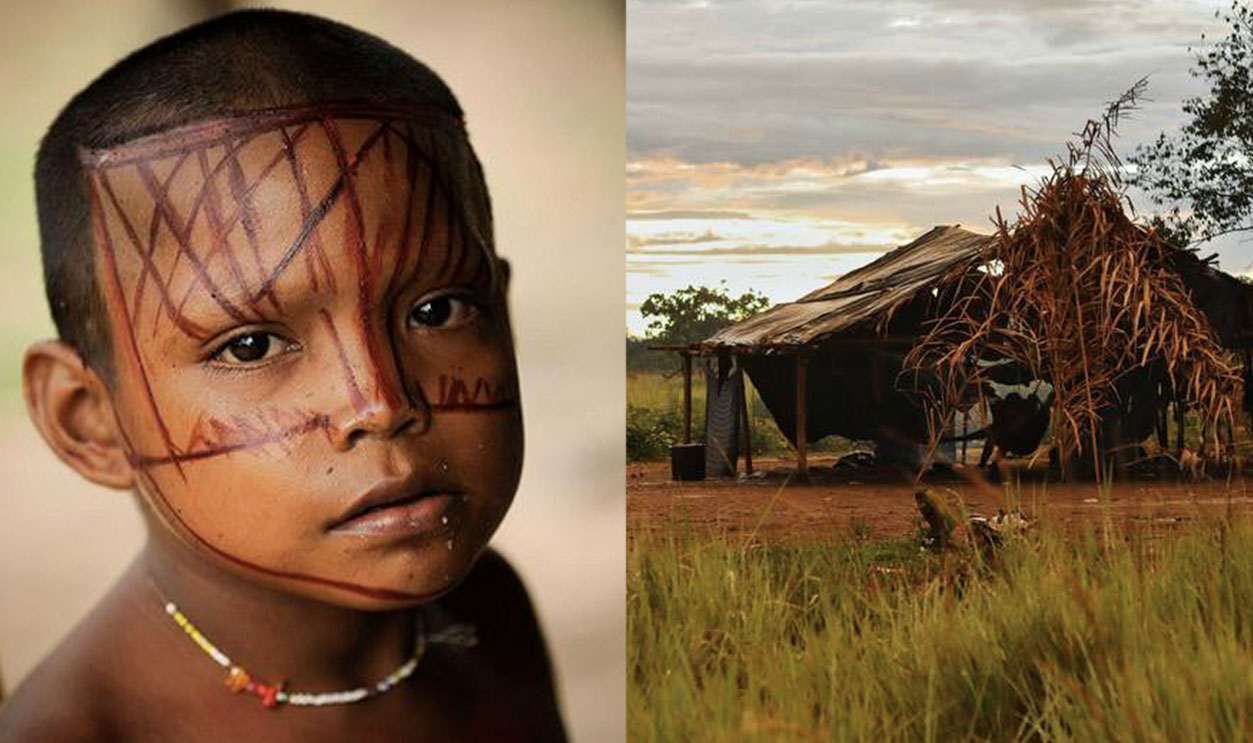
Where Do They live?
The traditional Nukak territory lies deep in the Amazon rainforest in Colombia. More specifically, between the Guaviare and Inírida rivers.
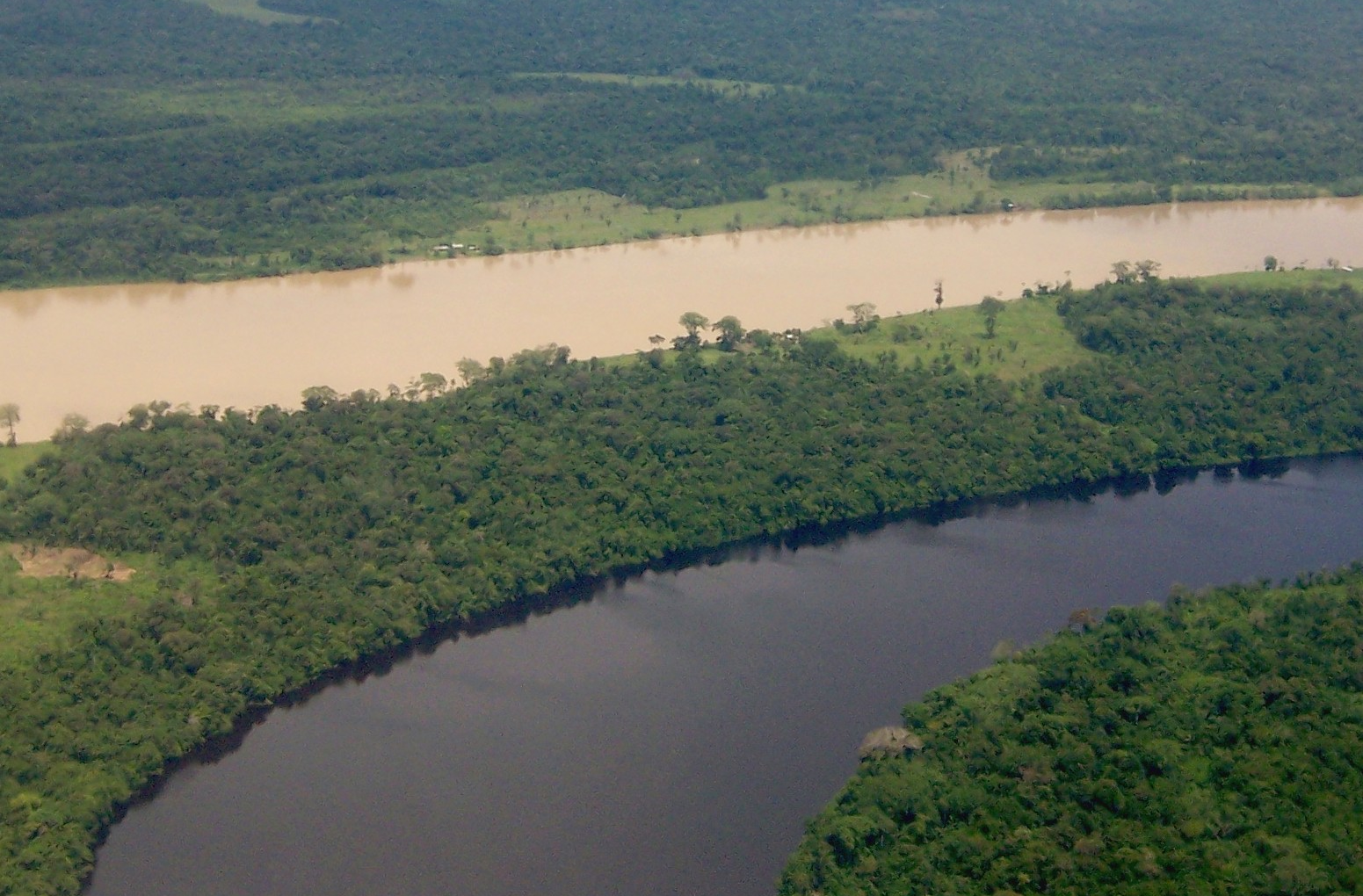 Sebastián Restrepo Calle, Flickr
Sebastián Restrepo Calle, Flickr
Who Are They?
The Nukak were classified as “uncontacted people” up until 1981. However, they didn’t come into physical contact with an outsider until 1988. Considering this was not even 40 years ago, the Nukak are considered the last contacted tribe of Colombia.
Why Were They Uncontacted For So Long?
For their whole lives, the Nukak were taught to fear white people, believing they were all cannibals and would enjoy feasting on their people.
Believe it or not, there are numerous uncontacted tribes living in the Amazon rainforest, all of whom believe white people bring darkness.
For the fear of the unknown, they make it their mission to remain hidden.
What Language Do They Speak?
The Nukak have their own unique language—which is now considered endangered. It is classified as part of the Maku language family, which is unrelated to the languages of most other indigenous groups in Colombia.
 Galo Naranjo, Wikimedia Commons
Galo Naranjo, Wikimedia Commons
How Big Is Their population?
The Nukak are few and far between, with a current population of less than 1,000—which is actually an increase in recent years.
Sadly, after contact with outsiders, the tribe lost half of their population to disease, and have been struggling to repopulate since.
What Was Life Like Before Contact?
Before they emerged from their tropical paradise, the Nukak lived an incredible, self-sustained lifestyle rich in cultural traditions, deep spiritual beliefs, and an intriguing social structure.
Although their lives have changed since outsider contact, for the most part, many Nukak continue to live a similar lifestyle to that from before. Which makes their story that much more interesting.
How Do They Live?
The Nukak are a nomadic group. They move around to access different natural resources throughout the year—and to avoid depleting resources in a single area. Traditionally, they lived isolated, away from other tribal groups and far from any sort of modern society.
They have everything they need in the rainforest, from food to shelter, clothing, and tools—their biodiverse territory has served them well for centuries.
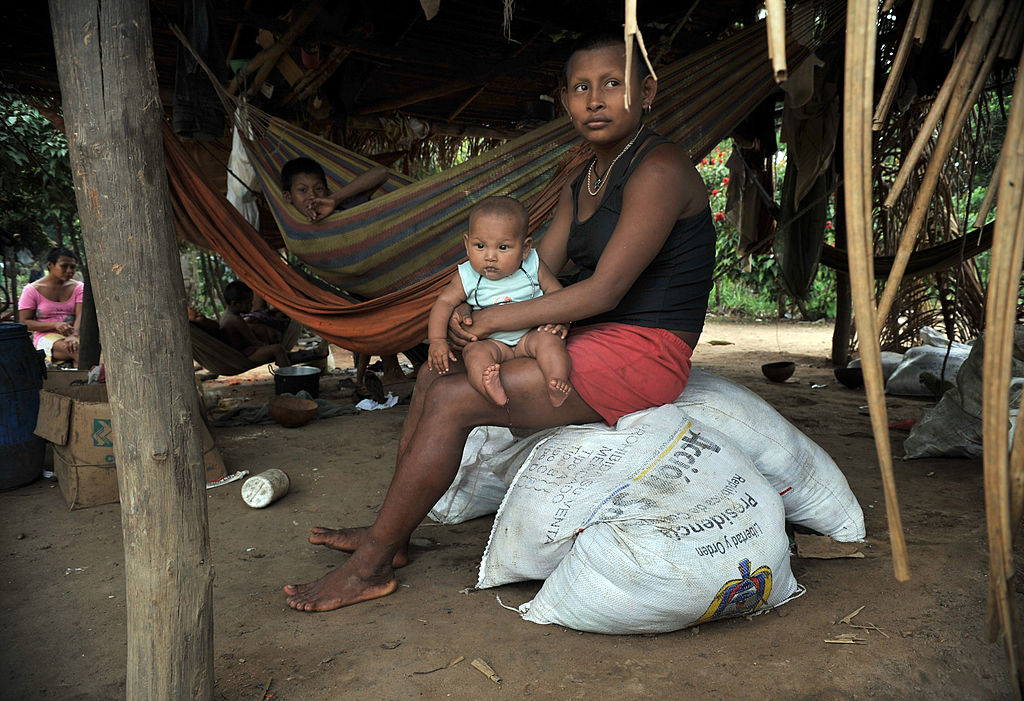 GUILLERMO LEGARIA, Getty Images
GUILLERMO LEGARIA, Getty Images
What Were Their Homes Like?
Traditionally, the Nukak moved around a lot and so their shelters were temporary. They were very light structures made of wood and palm leaves, with no walls, just a roof.
They were big enough just to hang a hammock or two underneath for sleeping.
What Are Their Homes Like Today?
Nukak today still live in basic shelters made of mostly wood, and some modern materials, but they’re more permanent than before. Some of the Nukak use plastic sheets to cover their shelters instead of palm leaves, but it’s expensive and difficult to get.
Each family has its own hearth that's used to keep warm, cook, and to burn certain plants that keep those brutal Amazon mosquitoes away.
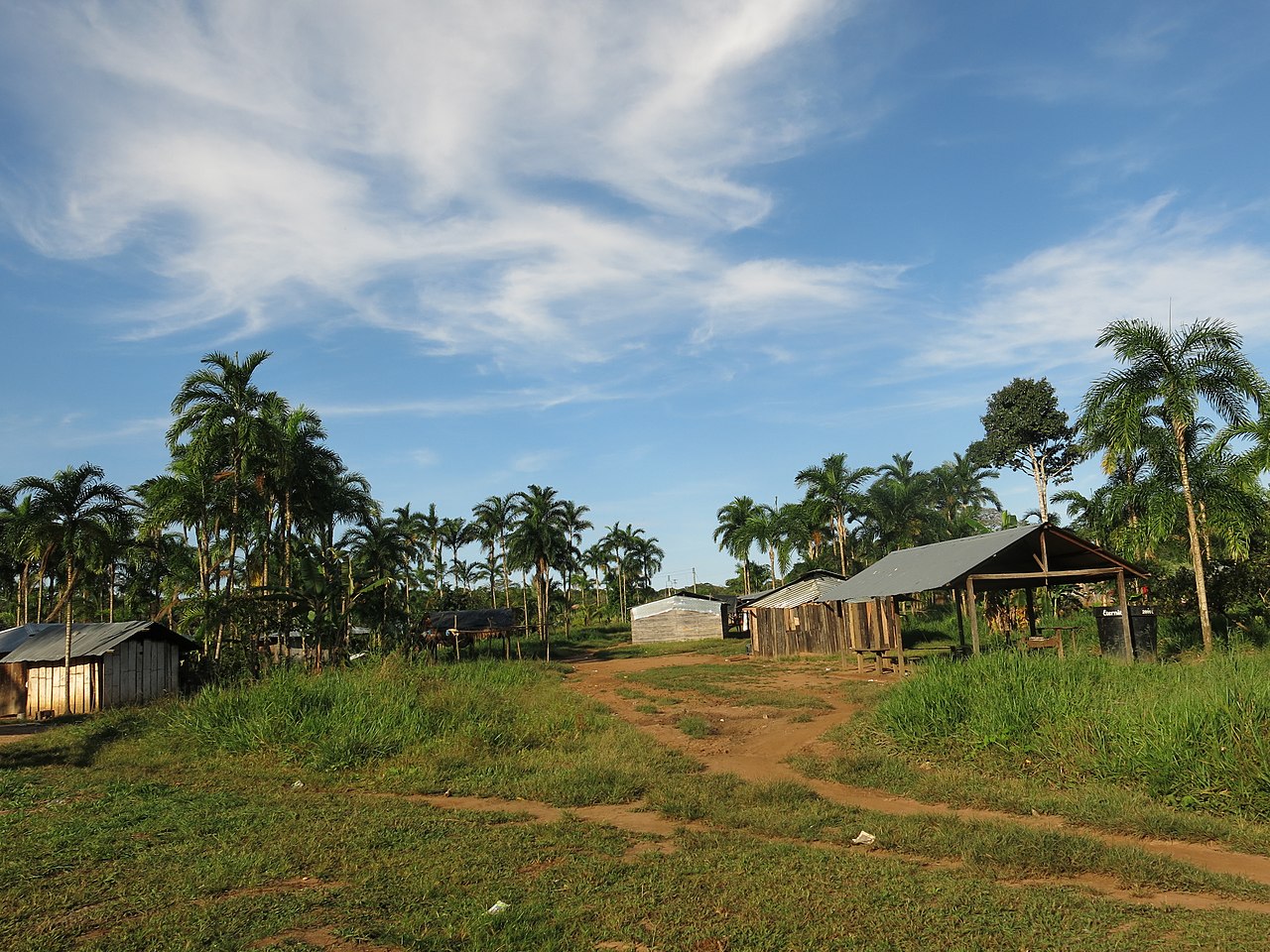 Julianruizp, CC BY-SA 4.0, Wikimedia Commons
Julianruizp, CC BY-SA 4.0, Wikimedia Commons
How Do They Hunt?
The Nukak are known to be expert hunters. The hunters—which are primarily men—use blowguns that shoot darts coated with curare “manyi,” a poison made from various plants.
They also use javelins made out of palm wood.
What Do They Eat?
They mostly hunt for several species of monkeys and birds. But they also track and hunt peccaries (pig-like animals)—which is what they use the javelin for—and caimans, whose eggs they eat, as well as several species of fish.
 Galo Naranjo, Wikimedia Commons
Galo Naranjo, Wikimedia Commons
How Do They Fish?
When fishing, the Nukak traditionally used bows and arrows, harpoons, traps, and baskets. But they also had a sophisticated technique that involved a plant that, when dissolved in the water, would stun the fish, making them much easier to catch.
 Disly Jara, CC BY-SA 4.0, Wikimedia Commons
Disly Jara, CC BY-SA 4.0, Wikimedia Commons
What Else Do They Do For Food?
The Nukak also capture rodents, armadillos, tortoises, crabs, shrimp, snails, larvae of palm weevils, and larvae of several species of wasps and caterpillars.
To harvest honey, they would call upon specific birds to scare away the bees so they could get closer to the hives.
While they have a fairly vast palate, there are a few things they will not eat.
What Will They Not Eat?
The Nukak will not hunt or eat brocket deer and tapirs. They consider these animals to share a common ancestor with humans, and thus, must be protected.
Hunting isn’t their only life-sustaining skill, though.
How Else Did They Thrive In The Rainforest?
The Nukak are also excellent gatherers. They spend hours scouring for various forms of honey and fruits—which the lush rainforest is plentiful with.
Not only do they gather foods, they also gather natural materials—since, traditionally, everything they had was handmade.
What Did They Make?
The Nukak made everything from their clothing to their hammocks, their baskets, soaps, and more, using natural resources from the rainforest.
Traditionally, they used piranha teeth for tools, clay for pots, and special wood fibers that proved to be exceptionally flammable for fires.
What Did They Wear?
Traditionally, the Nukak didn’t wear any clothing. Instead, they wore handmade bangles on their wrists, arms, ankles, and lower legs.
At some point, they started covering up a bit more, with men wearing loincloths made of animal skins. Today, many Nukak, specifically those who live in the settlements, wear modern clothing they acquire through trade or donation.
How Did They Grow Particular Foods?
The Nukak do it all. In addition to their exceptional hunting and gathering skills, they also use shifting cultivation to further nourish themselves—which involves an area of ground that is cleared and cultivated for a few years and then abandoned for a new area until its fertility has been naturally restored.
These gardens are usually located along regularly used routes that date back to their traditionally nomadic days.
What Did They Harvest?
In these cultivated areas, the Nukak plant and harvest sweet potatoes, yams, peach palms, pineapple, chili peppers, bananas, and sugar cane.
They also plant tobacco for ritual uses, and they have various plants they use for dye and body paint—which is another integral part of their culture.
 Hoako, CC BY-SA 3.0, Wikimedia Commons
Hoako, CC BY-SA 3.0, Wikimedia Commons
Why Do They Paint Their Bodies?
The Nukak’s traditional body painting is an important part of their cultural identity. Many children were painted daily by their mothers with traditional ink armor. This ritual was done so that they had the strength to face the environment around them.
Painting their faces is also a sign of friendship, and it also allows them to take the lives of monkeys within a strict moral code that is approved by their gods—something they still abide by today.
How Do They Treat Monkeys?
While not much is known about the details of their beliefs, the Nukak are said to have a strict moral code—especially when it comes to monkeys. While monkeys are a main source of food for them, the children will also often play with baby monkeys, and have them roam around inside the camp. When the monkeys are adults, they’re sent back into the wild to be hunted at a later date.
Why Do They Send Monkeys Back Into The Jungle?
This is a way of keeping peace with nature, and respecting their food. The elders also believe this strengthens the future food source needed for their children. But not only did they respect the monkeys, they went to great lengths to care for them.
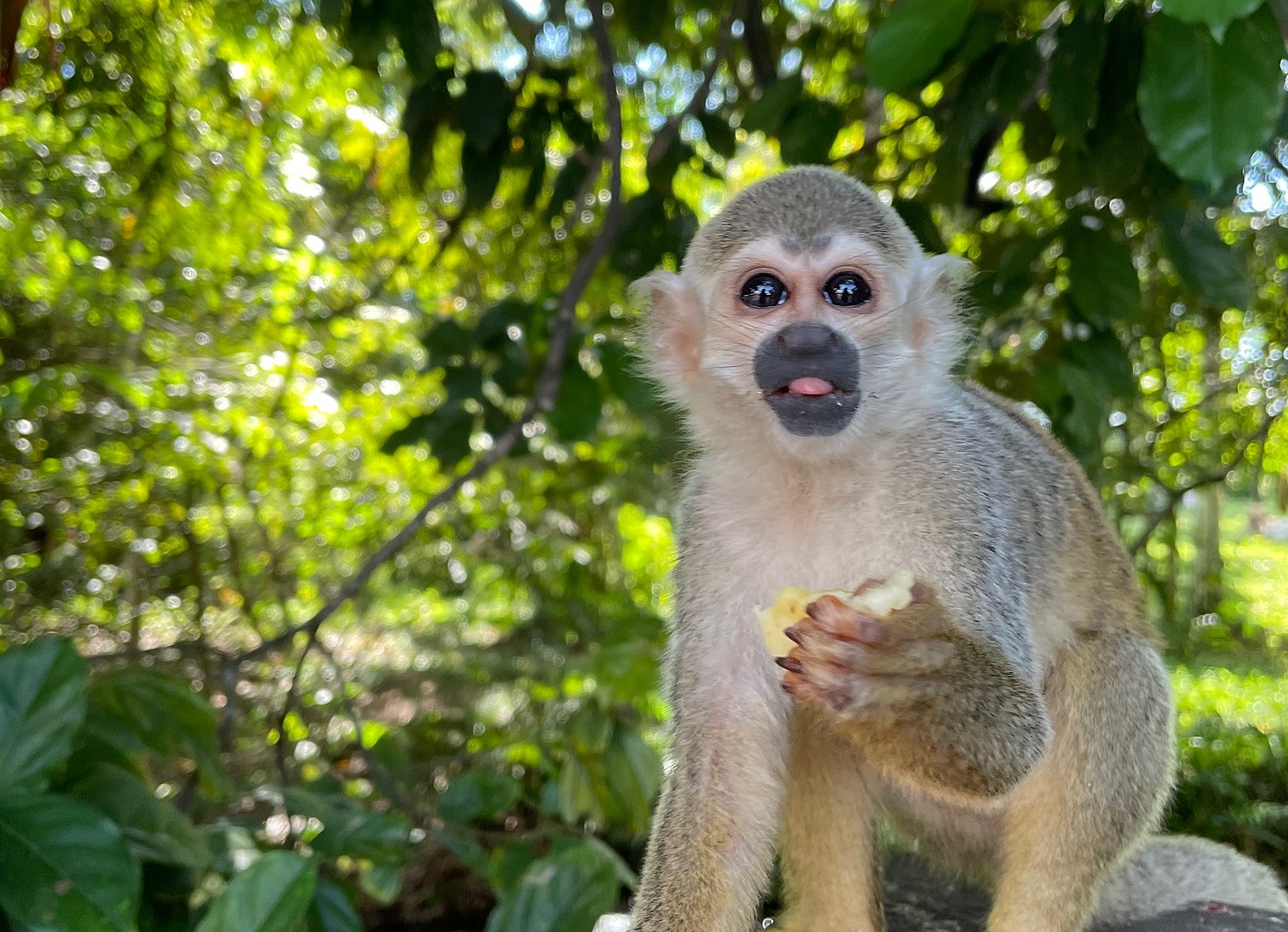 Taroxxvi, CC BY-SA 4.0, Wikimedia Commons
Taroxxvi, CC BY-SA 4.0, Wikimedia Commons
How Did They Care For The Monkeys?
When Nukak hunters brought home dozens of lifeless monkeys, they would also come back with a handful of baby monkeys that tragically lost their mothers in the hunt.
The babies were kept alive, and brought to the Nukak mothers, who would then feed the baby monkeys from their own bosoms, nourishing them with human milk.
They were raised as loving pets, until they were old enough to be sent back into the wild.
What Are Their Marriage Practices Like?
Nukak marriage is as traditional as can be, with incredibly fascinating customs and expectations.
First of all, their marriages are based on cross-cousin unions—where a daughter marries the son of her father’s sister, and the son marries the daughter of his mother’s brother.
So, kissing cousins is okay—but it can’t be just any cousin.
Who Are They Forbidden To Marry?
They have to make sure they get it right, because parallel cousin marriage—where a daughter marries the son of her father’s brother—is strictly forbidden.
While the preferred marriage is cross-cousin, exceptions are commonly made based on availability, considering their small numbers.
So, is it really forbidden? Well, it depends on who you ask.
What Else Is Fascinating About Nukak Marriage?
Not only do they marry their cousins, the Nukak also practice polygyny—where a man can have several wives. Most commonly, Nukak men had two wives (three or more was rare). However, this isn’t as common today.
But there is a similar intriguing practice that does still occur in Nukak communities today—and this time, it favors the woman.
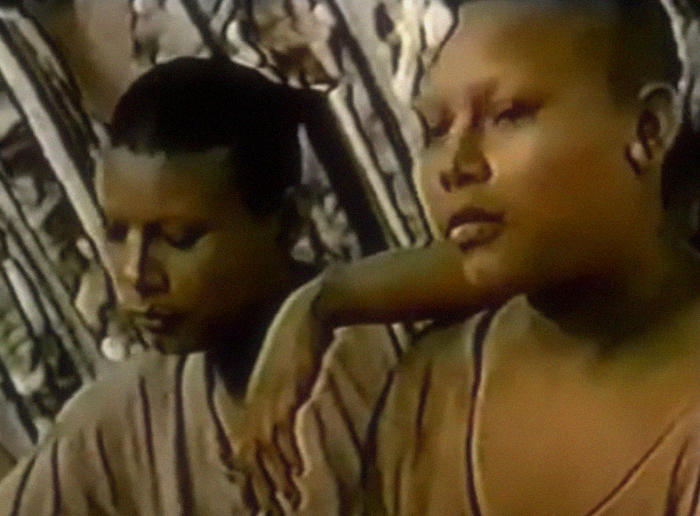 Audiovisuales, Nukak Maku (1993)
Audiovisuales, Nukak Maku (1993)
What Practice Favors Women In A Nukak Marriage?
In many Nukak families, polyandry—a woman having more than one husband—is common. But only during pregnancy, when there is a need for such a thing.
The polyandry side of things is only temporary. Once the need is satisfied, the women let the men go. But what exactly is this need?
It’s For The Baby, We Promise
A pregnant Nukak woman would sleep with several different men during her pregnancy, as their culture believes it to be beneficial to the development of the unborn child.
But, as most of us may know, the mother benefits from this too.
Okay, Maybe A Little For The Mom, Too
Not only do the Nukak believe the child will develop more appropriately with regular action between the sheets, they also believe it to be important in keeping the woman healthy during pregnancy as well.
So, it basically became a group effort in the Nukak clan.
What Happens When They Get Married?
When a Nukak marriage is arranged, candidates are chosen from certain clans, to avoid marrying cousins from the wrong side of the family. The man is then tasked with formally courting the woman, bringing her gifts to make her like him. If a girl still lives with her father, the man must bring him gifts as well.
But before a man can court a woman, he must first go through an initiation process.
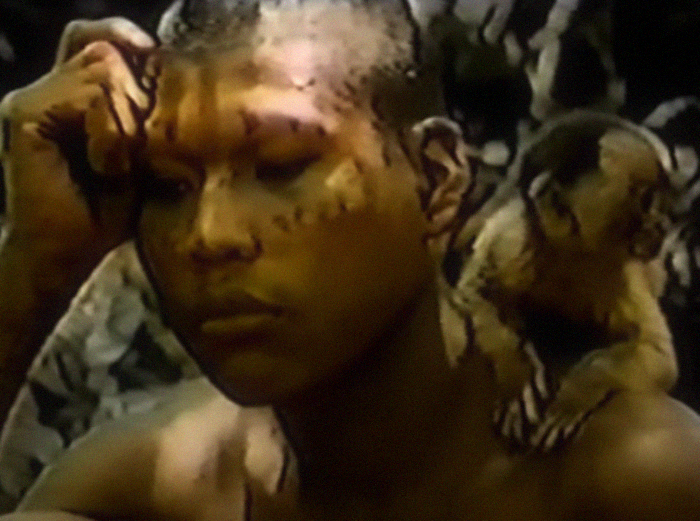 Audiovisuales, Nukak Maku (1993)
Audiovisuales, Nukak Maku (1993)
What Is The Initiation Ritual?
The initiation ritual for male Nukaks involves several activities where the boys are to prove that they are worthy of being called men. Aside from dancing, chanting, body painting, hunting, and fighting, the boys consume a powerful hallucinogen that allows them to communicate with the spiritual world.
They then ask for guidance and protection in the next chapter of their lives.
 Audiovisuales, Nukak Maku (1993)
Audiovisuales, Nukak Maku (1993)
Where Do They Live When They Get Married?
When a woman accepts a marriage proposal, she then moves into the man’s camp. But they aren’t considered a “formal pair” until she has a child. At that point, she is officially accepted by the clan.
While the total Nukak population is fairly small to begin with, they divide themselves into smaller groups—which not only helps keep the marriages organized, but it serves other purposes too.
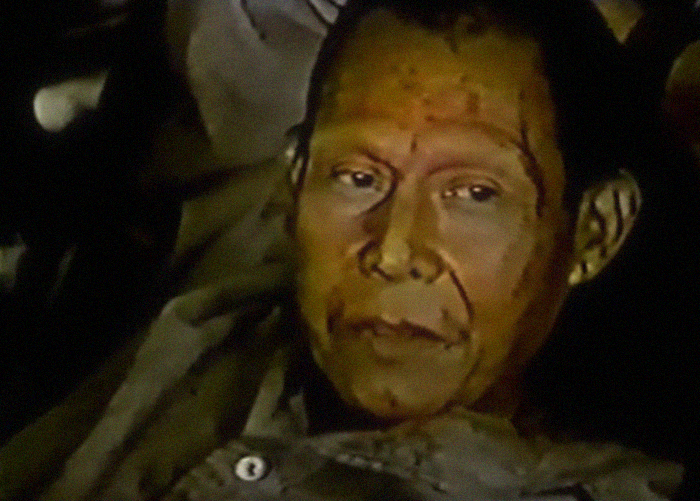 Audiovisuales, Nukak Maku (1993)
Audiovisuales, Nukak Maku (1993)
How Is The Tribe Divided?
Each group is part of a territorial group that was created to perform specific duties, like security, hunting, farming, etc.
There are about 10 different Nukak groups, called wün. Each one has about 50-60 people. Most of the year though, these groups do not stay together. Instead, they form even smaller groups, which are often called clans, based on hunting and harvesting practices, and they move around with the seasons.
These clans come together with their larger groups for special occasions and rituals, and to share resources when needed.
What Is Taboo?
While the groups are an important part of their social structure, there are also some strong beliefs that govern how the Nukak people live.
For example, speaking of those who have passed is considered a serious taboo in the Nukak culture.
 Audiovisuales, Nukak Maku (1993)
Audiovisuales, Nukak Maku (1993)
Why Is It Taboo?
Communicating with late loved ones is said to bring more demise, or perhaps the ailment in which the person passed from.
While not all ailments can be explained when you live isolated in the jungle, the Nukak do their best to provide their people with medicinal aid.
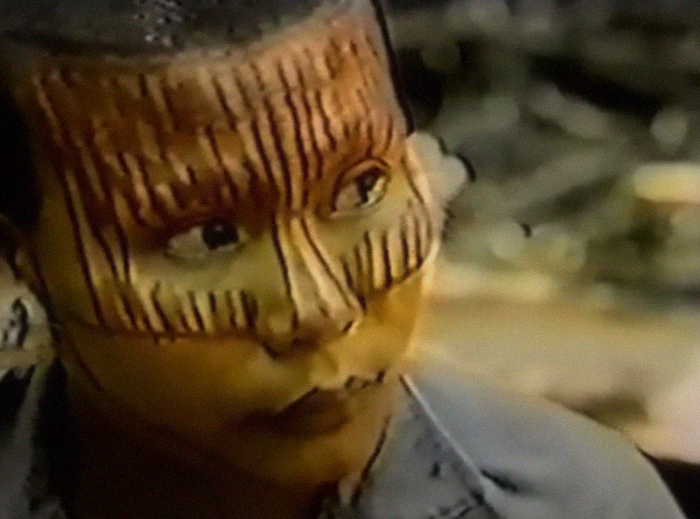 Audiovisuales, Nukak Maku (1993)
Audiovisuales, Nukak Maku (1993)
How Do They Stay Healthy?
Considering the Nukak have a close relationship with their environment, they have a deep knowledge of what the rainforest provides—including medicinal plants (and some wildlife) that they can use to treat things like fever, malaria, and other respiratory ailments.
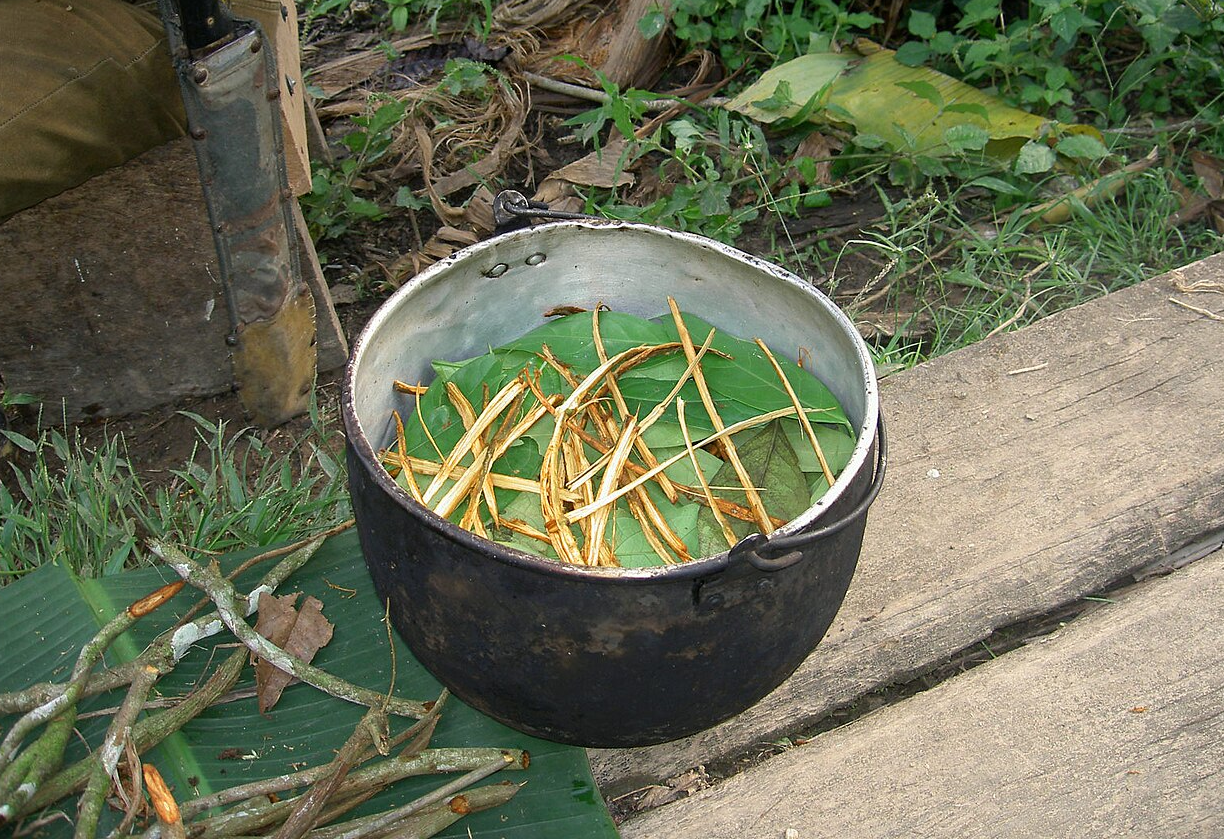 Terpsichore, CC BY-SA 3.0, Wikimedia Commons
Terpsichore, CC BY-SA 3.0, Wikimedia Commons
What Do They Believe In?
For the most part, the spiritual beliefs of the Nukak are closely tied to their natural surroundings. They worship the land, the forest, and the animals that live among them.
They also believe the rainforest is home to a complex web of spirits that live among them as well, including three spirits that go to different places at the time of death.
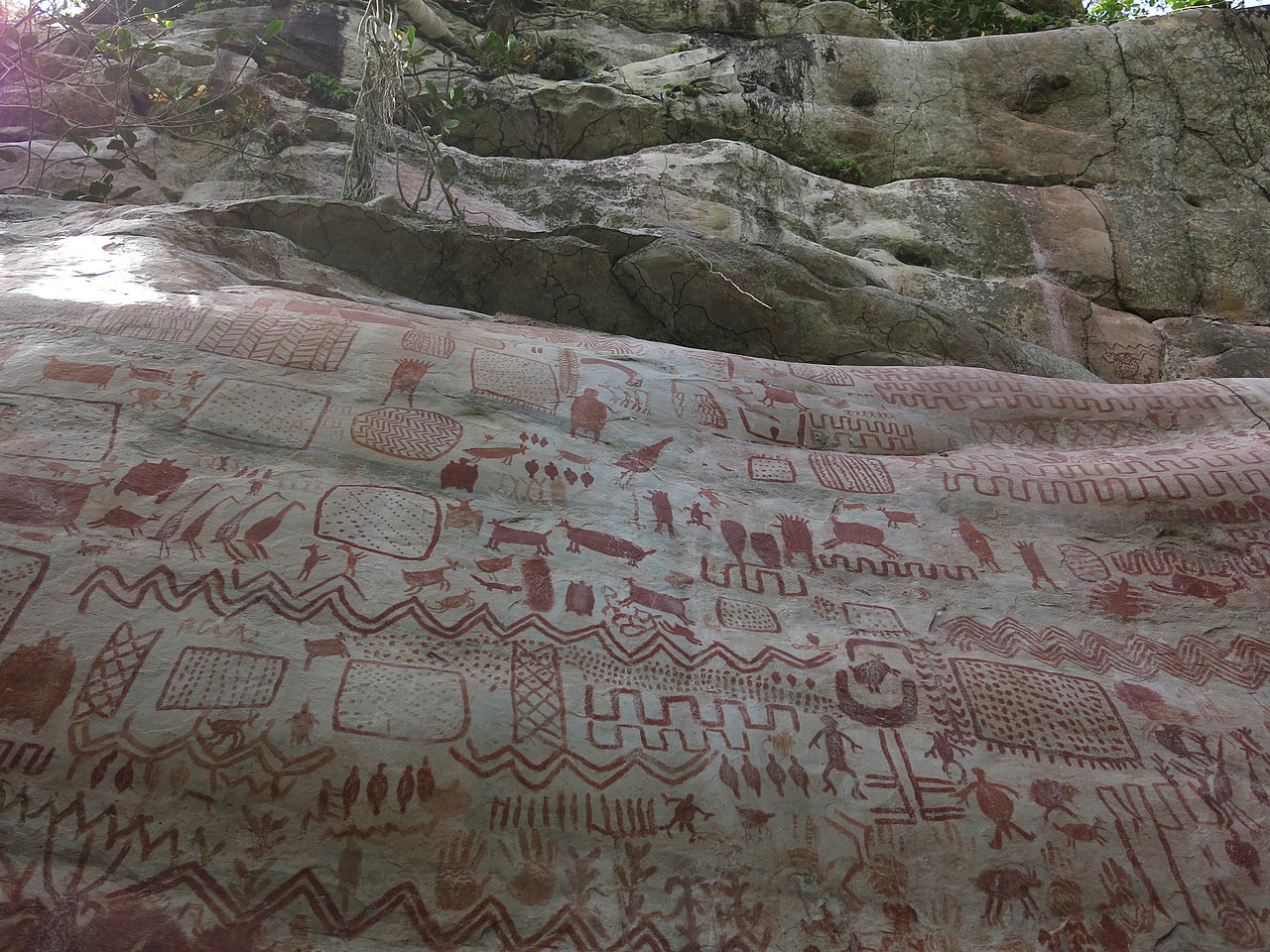 Julianruizp, CC BY-SA 4.0, Wikimedia Commons
Julianruizp, CC BY-SA 4.0, Wikimedia Commons
Why Are The Spirits Important?
They believe that these spirits influence their daily lives and often engage in rituals and ceremonies to communicate with and appease these spirits. They believe that the Earth is a living being and that humans must live in harmony with nature.
How Do They Communicate With The Spirits?
The Nukak are rich in tradition, which includes various forms of music, storytelling, and other oral rituals. They use songs, chants and stories to pass down their history, and to communicate with their beloved spirits.
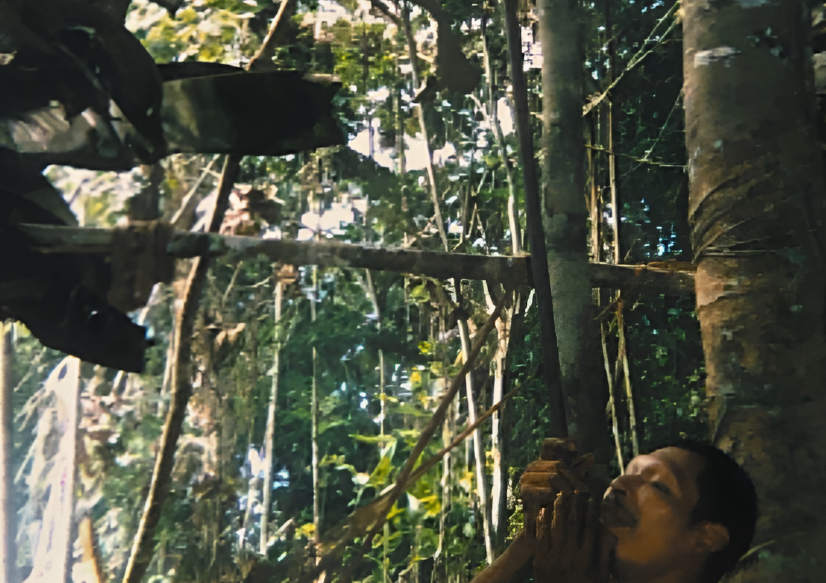 JabaquaraSP00, CC BY-SA 4.0, Wikimedia Commons
JabaquaraSP00, CC BY-SA 4.0, Wikimedia Commons
Why Don’t We Know More?
Not much more is known about the spiritual beliefs of the Nukak. This is because our relationship with them has not often been a pleasant one. As with most uncontacted tribes, the sudden exposure to a colonized lifestyle can have detrimental effects.
And this rings true for the Nukak tribe.
When Were They Discovered?
It is believed that the Nukak were first discovered in 1981, though no physical contact had happened yet. Instead, upon discovering self-sustained life, loggers and coca growers quickly began encroaching on their lands.
Not only did this deplete their natural resources, it also introduced disease.
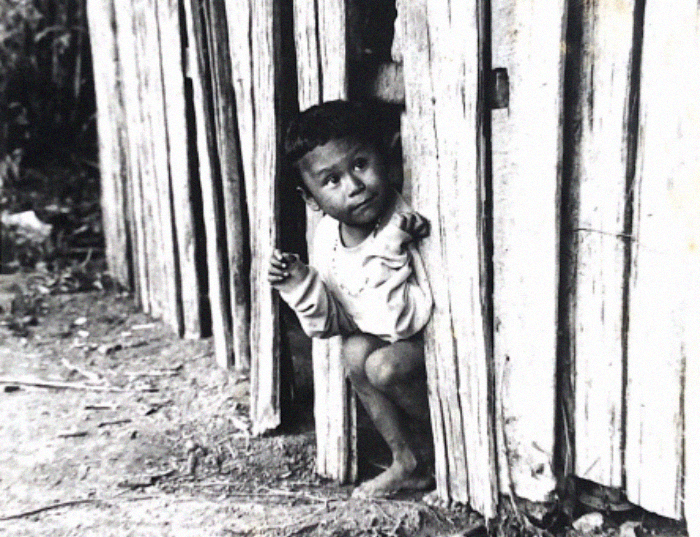 JabaquaraSP00, CC BY-SA 4.0, Wikimedia Commons
JabaquaraSP00, CC BY-SA 4.0, Wikimedia Commons
Why Was This Dangerous For Them?
The loggers and farmers were now bringing machinery and modern amenities into the delicate rainforest, wiping out plants, animal habitats, and whole ecosystems.
And at the same time, they brought in trash, processed foods, booze, and substances. The Nukak were now introduced to dangerous and harmful things that they knew nothing about before—things their bodies were not accustomed to.
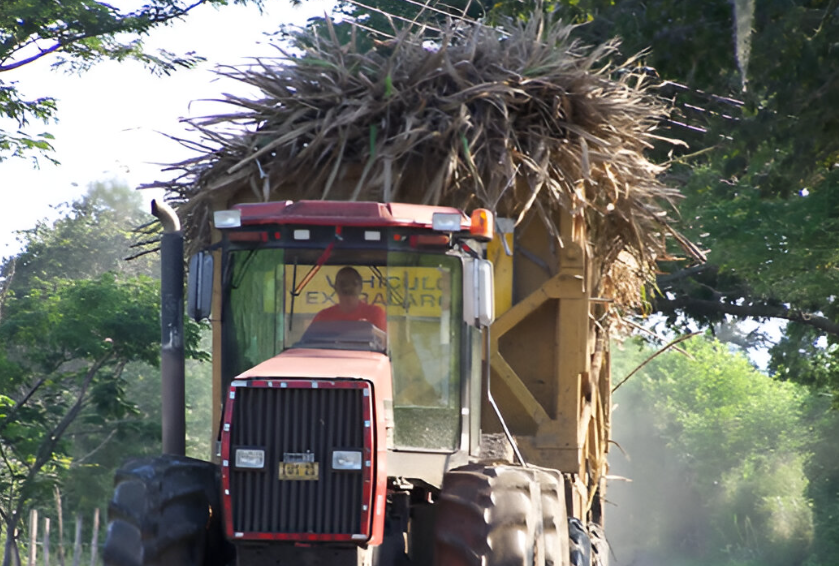 Julian Hoyos, CC BY 2.0, Wikimedia Commons
Julian Hoyos, CC BY 2.0, Wikimedia Commons
How Did They Get Sick?
Even before they thought to consume anything left behind by outsiders, the biggest problem was disease. A simple cold virus could—and did—wipe out dozens of indigenous people, including many Nukaks.
Malaria and the flu were two major problems, and eventually wiped out more than half of their population in only a matter of years.
It was then that the Nukak made a difficult choice.
They Came Out Of Hiding
In early April 1988, colonists in a town called Calamar experienced a monumental moment when the mysterious “primitive” and “wild” Indians they had only heard about showed up at the doorstep of their rural school.
Before this, locals of Calamar had only heard stories where the Nukak people were painted as “cannibals” and “unclothed savages”.
Why Did They Reveal Themselves?
By this time, their land had been nearly taken over by not just loggers and coca growers, but also settlers, ranchers, and guerillas. They were losing land, food, and resources faster than ever—and they were fearing extinction.
The locals of Calamar welcomed them, and did their best to help.
The Nukak Reserve
In 1993, campaigning in Colombia by ONIC (National Indigenous Organization of Colombia) and others, managed to gain international attention and support, which led to the creation of the Nukak Reserve, allotting the Nukak almost 1 million hectares of protected forest.
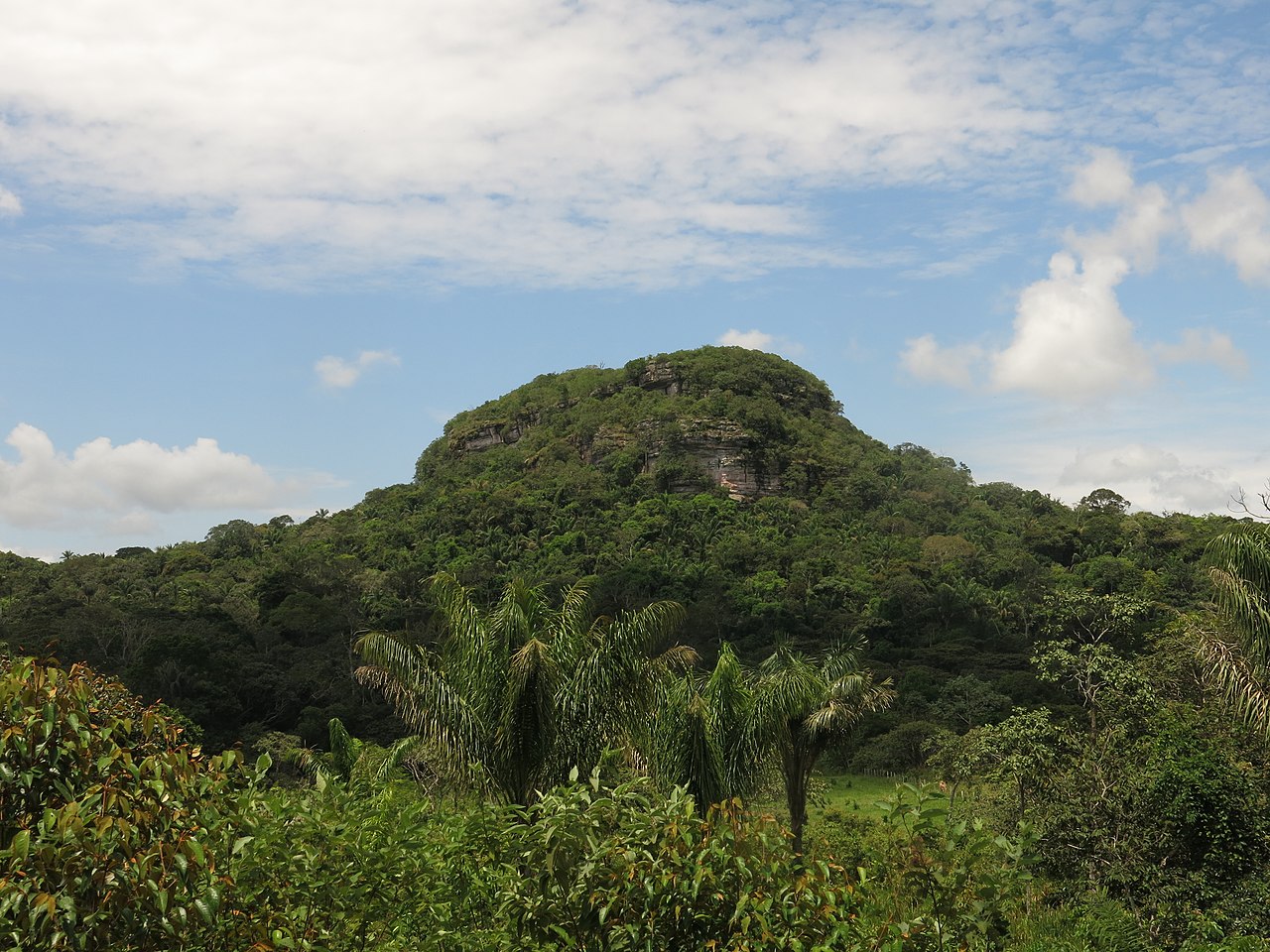 Julianruizp, CC BY-SA 4.0, Wikimedia Commons
Julianruizp, CC BY-SA 4.0, Wikimedia Commons
Did They All Move To The Reserve?
The Nukak Reserve housed most of their population, with a few handfuls of Nukak who were believed to have stayed living in complete isolation without any aid, somewhere along their ancestral lands, refusing to acknowledge the reserve.
But just because the land had their name on it, doesn’t mean it stopped everyone else from entering.
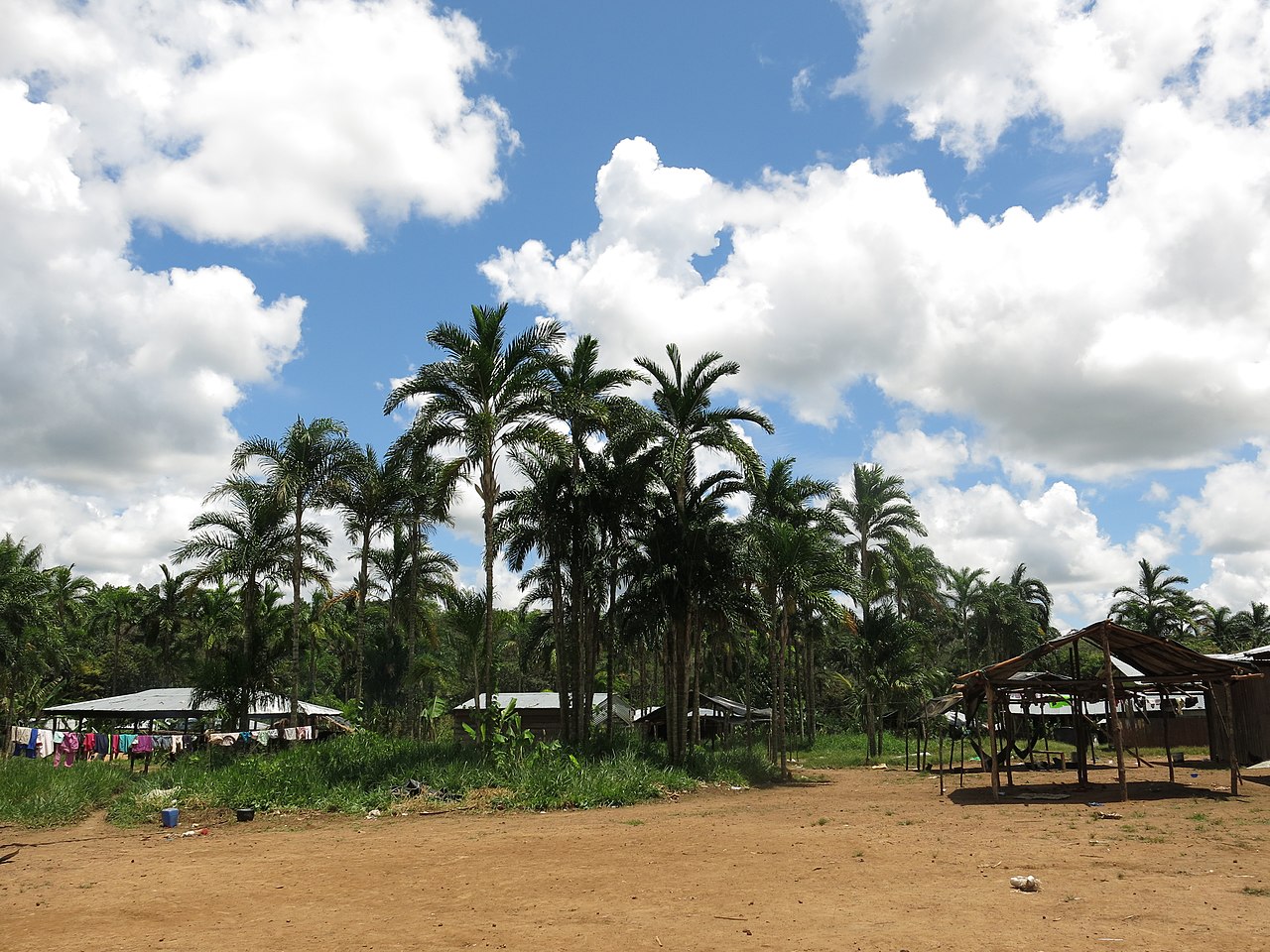 Julianruizp, CC BY-SA 4.0, Wikimedia Commons
Julianruizp, CC BY-SA 4.0, Wikimedia Commons
Did The Reserve Make Things Better?
The reserve may have some protections, but ultimately, those who break the law don’t care. And in turn, Nukak lands continued to be violently occupied by armed groups, unwelcomed outsiders who used the areas for the unlawful coca trade, and cattle ranchers who deforested large plots of land.
And that’s not all.
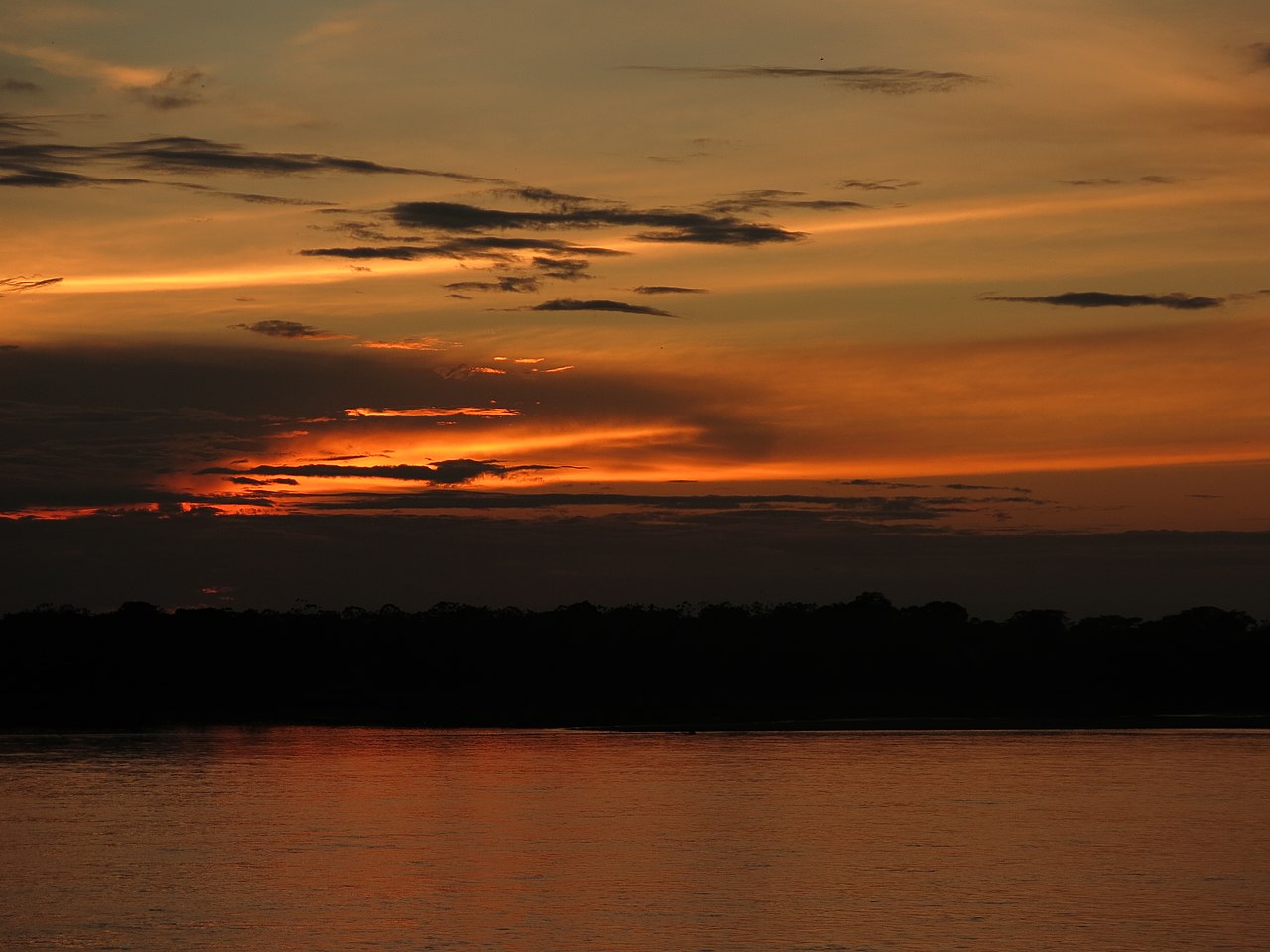 Julianruizp, CC BY-SA 4.0, Wikimedia Commons
Julianruizp, CC BY-SA 4.0, Wikimedia Commons
Where Did They Go From There?
If that’s not enough, their land was also riddled with anti-personnel mines. It got so bad that many Nukak were forced to flee their homes and seek refuge on the outskirts of a town called San Jose del Guaviare. Other Nukak were forced to leave at gunpoint.
No matter where they went, they were not welcomed.
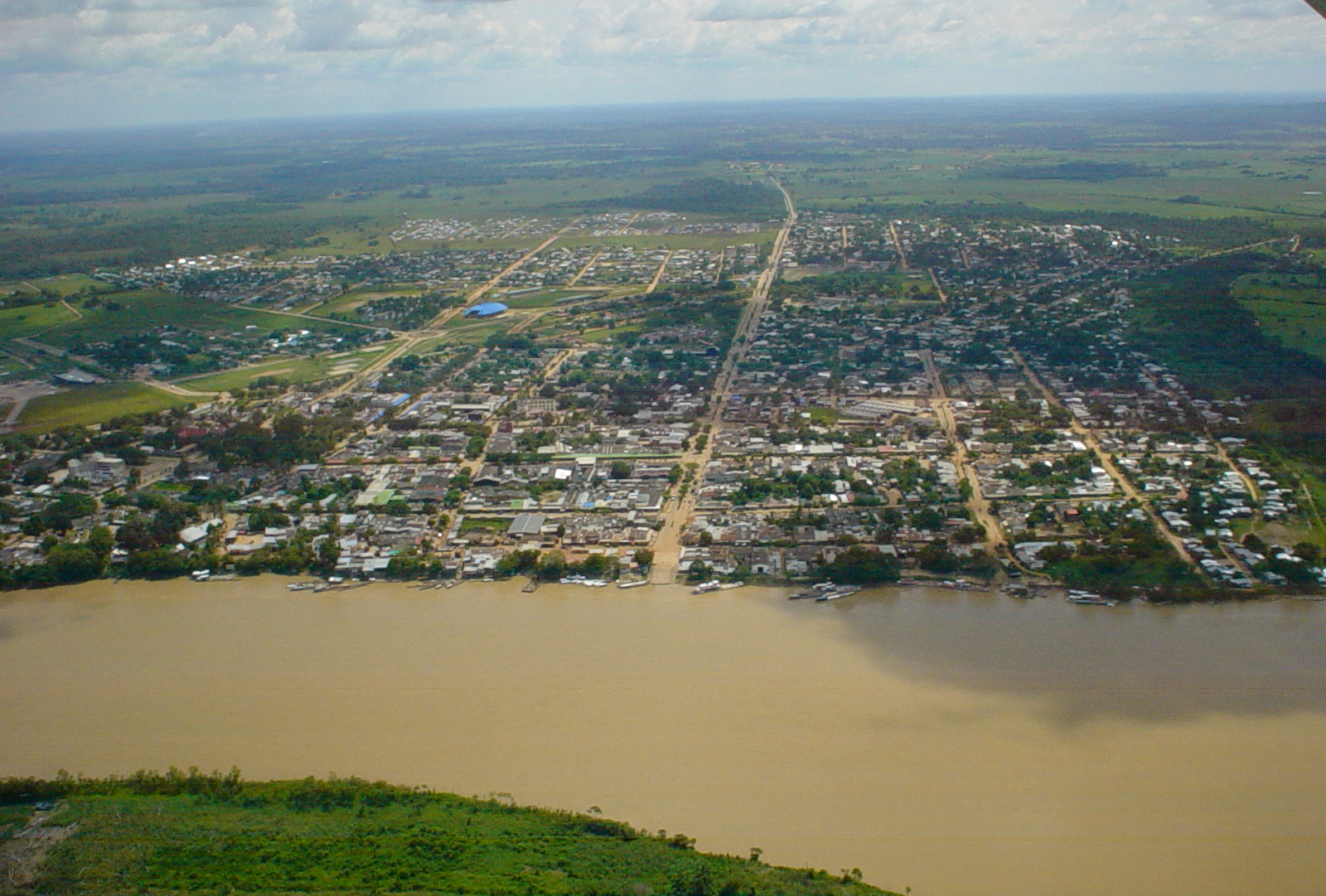 Unknown Author, CC BY-SA 3.0, Wikimedia Commons
Unknown Author, CC BY-SA 3.0, Wikimedia Commons
A Dwindling Population
For years, the Nukak struggled to survive. With death and disease at their doorstep, and limited food and resources, they were losing their elders and their children weren’t making it past infancy.
Booze and modern amenities were found at every corner, and the tribe began taking on a new lifestyle in an effort to simply survive—but it only made things worse.
It wasn’t until 2006 that the government finally stepped in again.
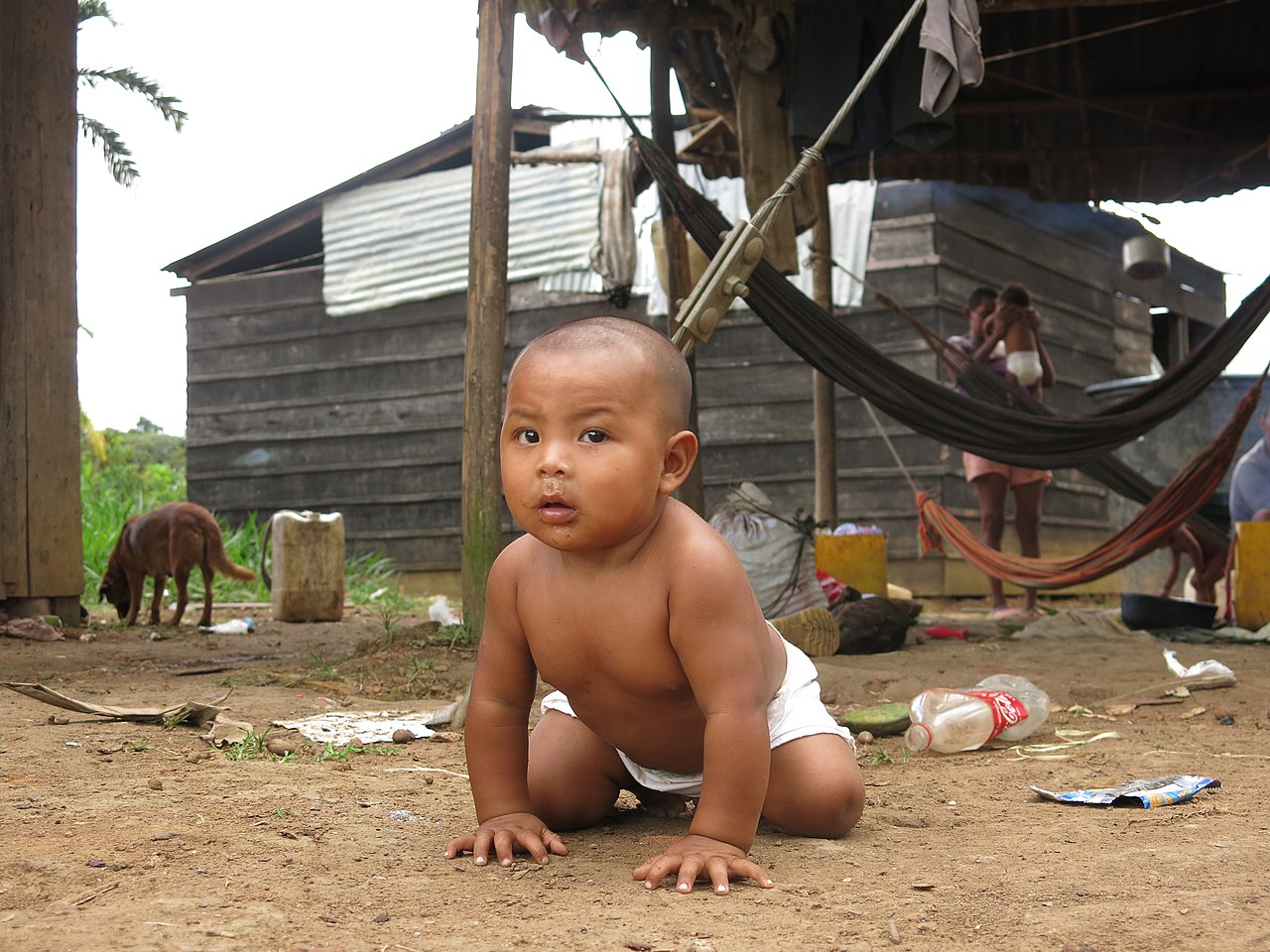 Julianruizp, CC BY-SA 4.0, Wikimedia Commons
Julianruizp, CC BY-SA 4.0, Wikimedia Commons
How Did The Government Help?
In 2006, the government tried to move the displaced Nukak back to the rainforest, but the spot they chose ended up being too small, and they were not any better off. It was at this point that the Nukak leader, and the only Spanish speaker of the tribe, did something unthinkable.
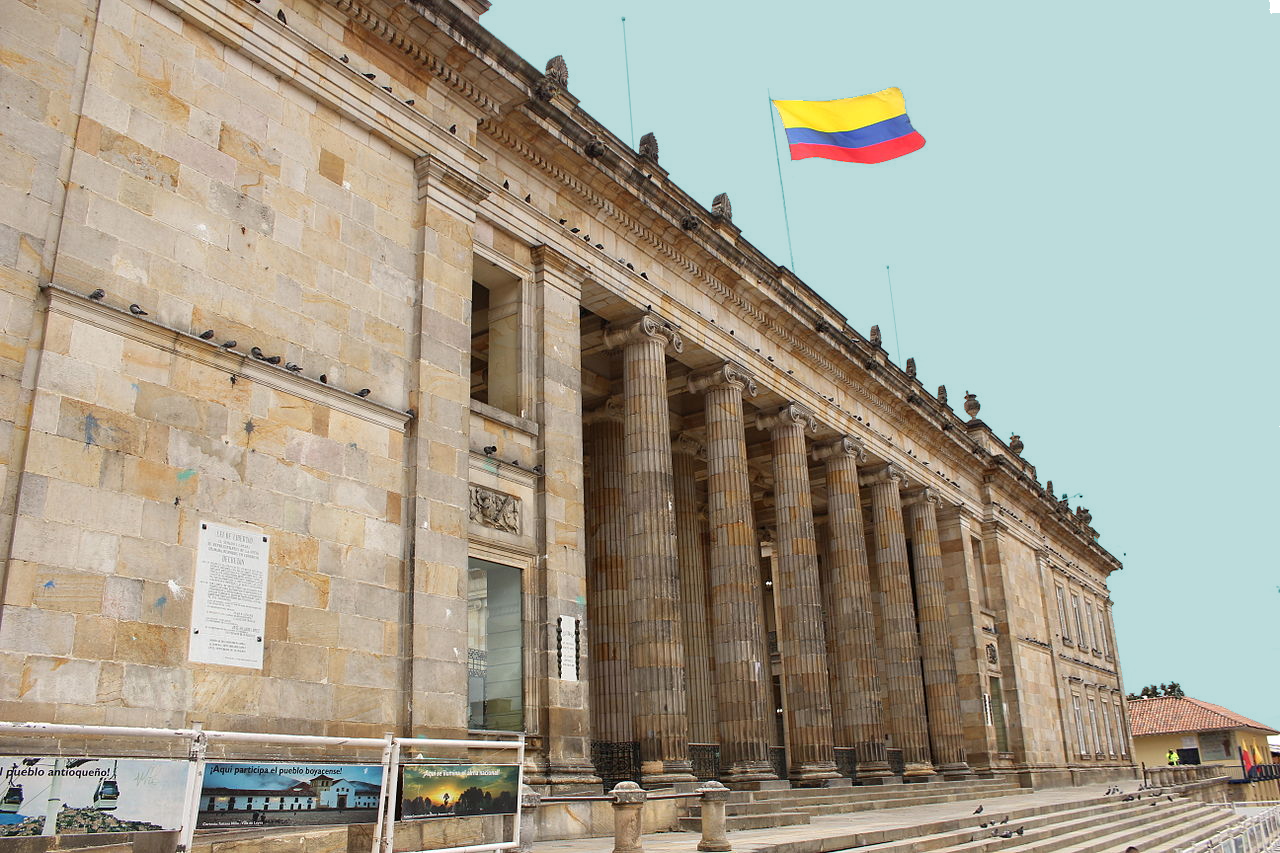 Mauromed, CC BY-SA 3.0, Wikimedia Commons
Mauromed, CC BY-SA 3.0, Wikimedia Commons
What Happened To The Leader?
In October of 2006, Nukak leader Mao-be had given up. Apparently, he had said his prayers and then grabbed a bottle of curare—the plant toxin used for the poison darts—and walked into the jungle alone.
He drank the entire bottle and was found lifeless the next morning.
Where Did They Go Next?
After the immense loss of their leader, the Nukak decided to wave the white flag and just go back to San Jose del Guaviare, the small town that filled their people with all that is evil in the world.
Eventually, peace agreement negotiations took place, and settlements were created.
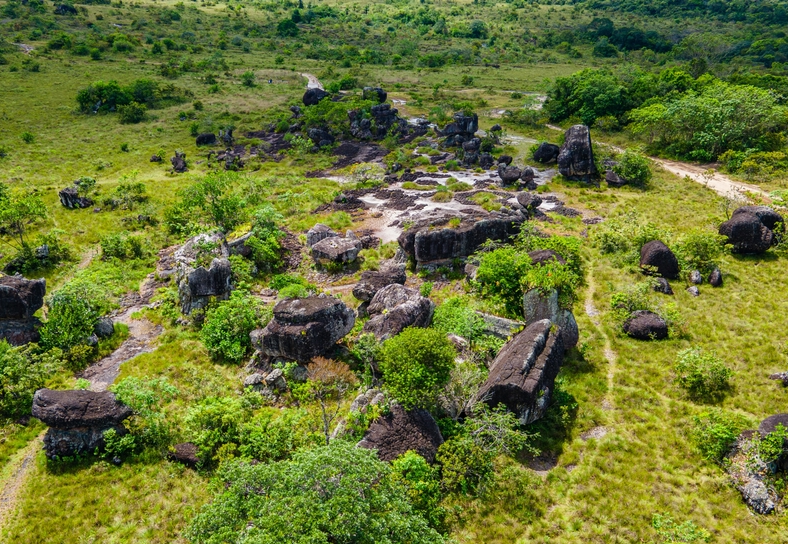 Jhampier Giron M, Shutterstock
Jhampier Giron M, Shutterstock
How Many Settlements Were Created?
The Nukak are now confined to about 20 settlements in the Guaviare Department, which lie just outside their ancestral territory. Here, they have acquired modern foods, modern clothing, and modern tools. But they still live in hand-built shelters, sleep in hammocks, and eat barbecued monkey.
They still create beautiful handmade items, like baskets and hammocks, except now they are able to sell their handicrafts for money, or trade for more useful materials.
Will They Stay In The Settlements?
Even though many of the Nukak are in a “safer” place, they are adamant about moving back to their ancestral lands, and will continue to fight for that right as long as they’re still living. They are desperate to thrive once more as self-sufficient people, away from the dangers of colonization.
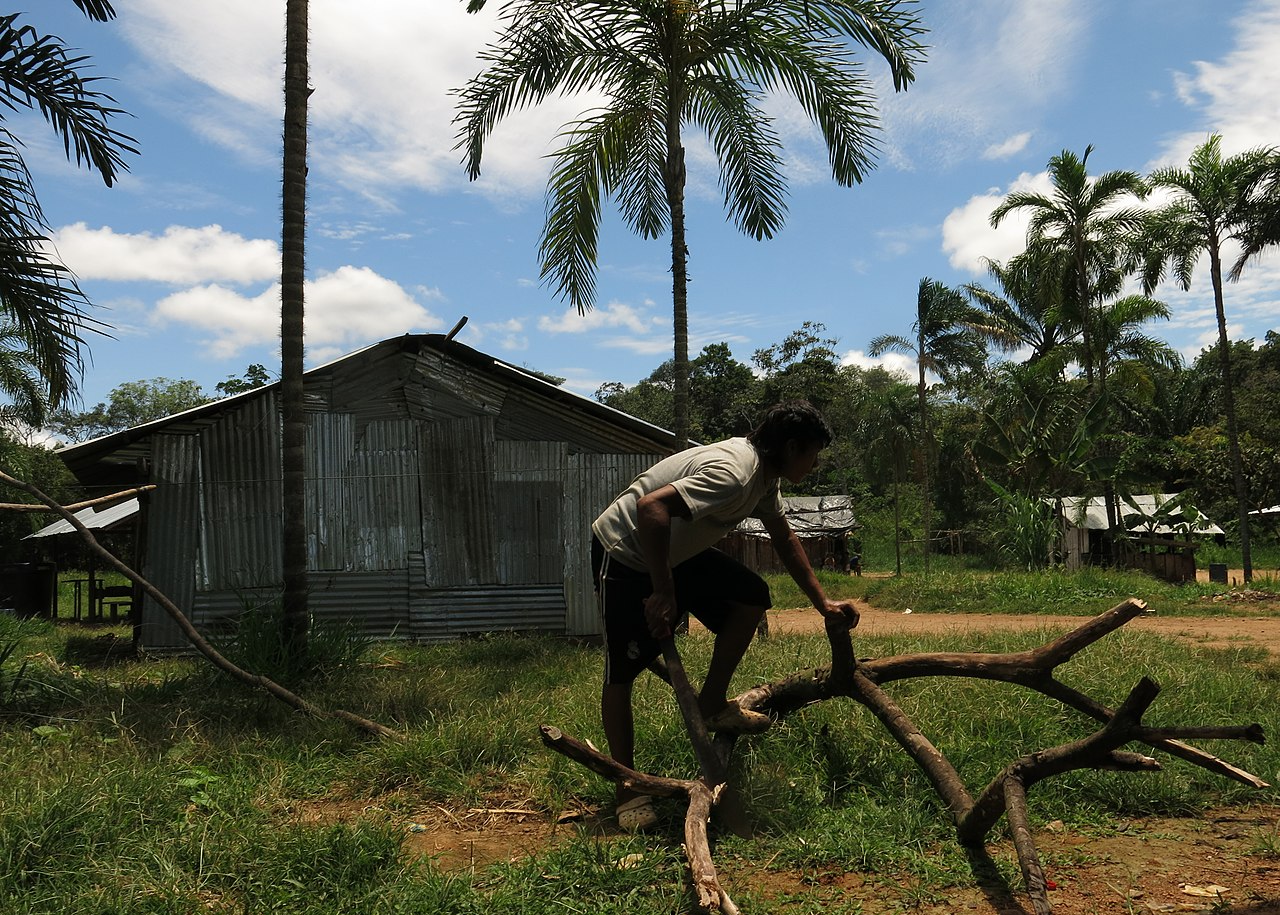 Julianruizp, CC BY-SA 4.0, Wikimedia Commons
Julianruizp, CC BY-SA 4.0, Wikimedia Commons
Living In Poverty
The Nukak settlements may provide them with some materials that make their lives easier, but these settlements continue to introduce disease, booze, substances, and food that their bodies are not used to.
To make matters worse, they have no access to healthcare or support. They’re basically living in the lowest forms of modern poverty.
How Are The Young Nukak In Danger?
Young Nukak are particularly exposed to harmful substances as well as forced labor on unlawful coca plantations. They are also at risk of being trafficked by guerillas, and even exploited for tourism.
Given the decreasing numbers of their population, many researchers believe the Nukak are at a high risk of becoming extinct, possibly as early as the next generation.
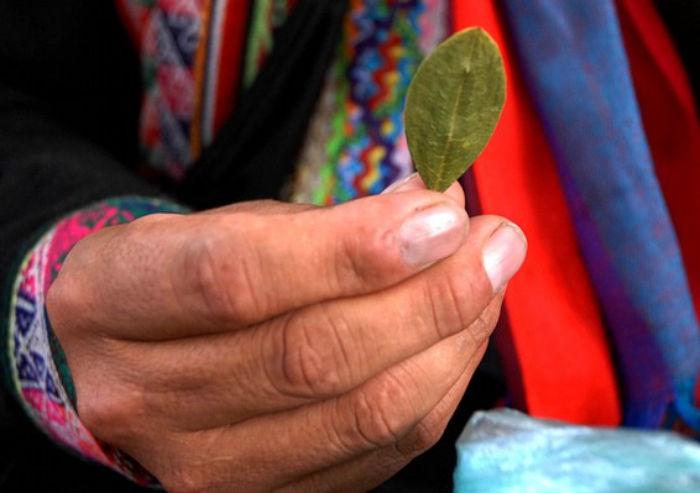 Marcello Casal Jr./ABr, CC BY 3.0, Wikimedia Commons
Marcello Casal Jr./ABr, CC BY 3.0, Wikimedia Commons
In The Words Of A Young Nukak
According to Survival International, a Nukak person named Alex Tinyu said in an interview: “We want to return to our land. There we had clean water and there were no “zancudos” (the mosquito that transmits malaria). We are very abandoned here, but the Nukak always fight for their family”.
Where Are They Today?
What the Nukak want now is for the boundaries of their reserve to be respected and for them to be able to live there in peace, as is their right.
An estimated 210-250 Nukak people live in the settlements today, while the rest have accepted the risks and gone back to their nomadic lifestyle on the land that is still considered the Nukak Reserve—living in fear, but fighting for what they believe in.

